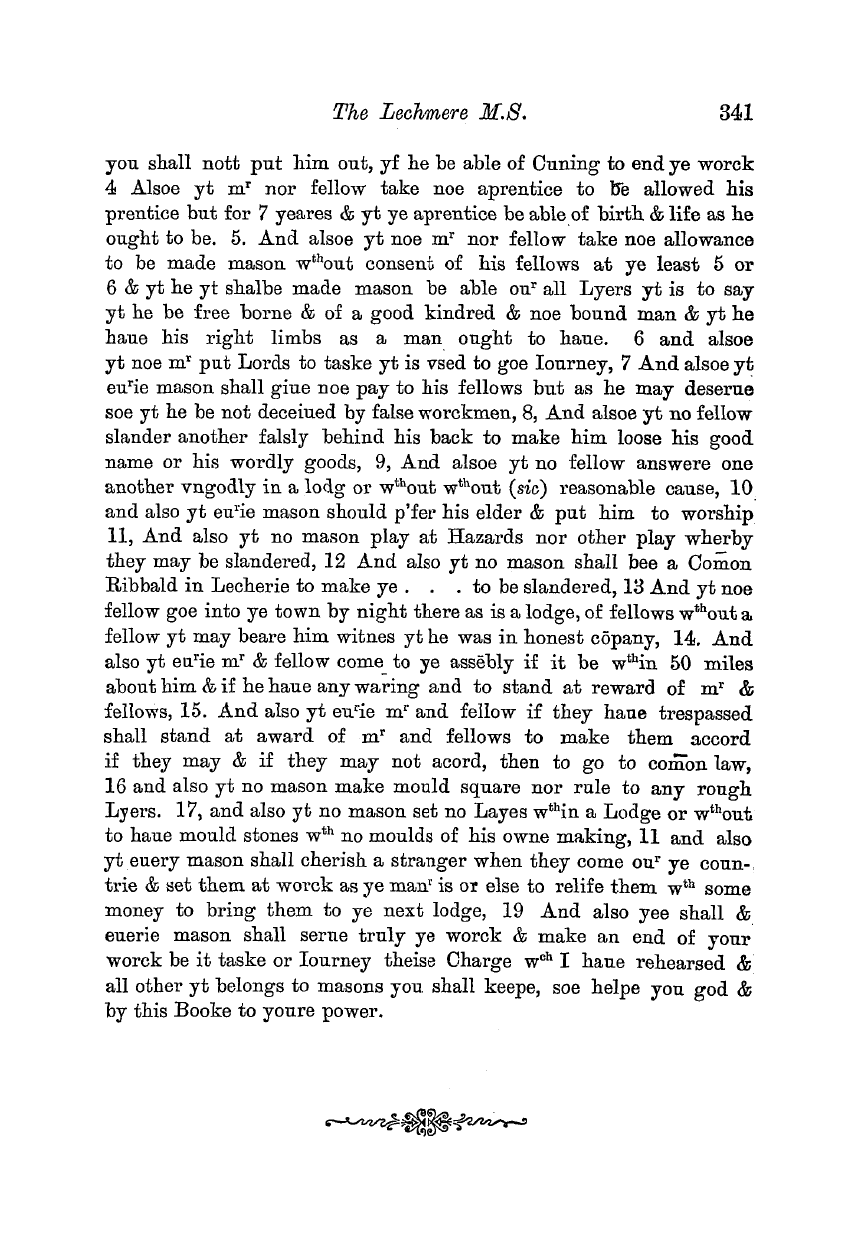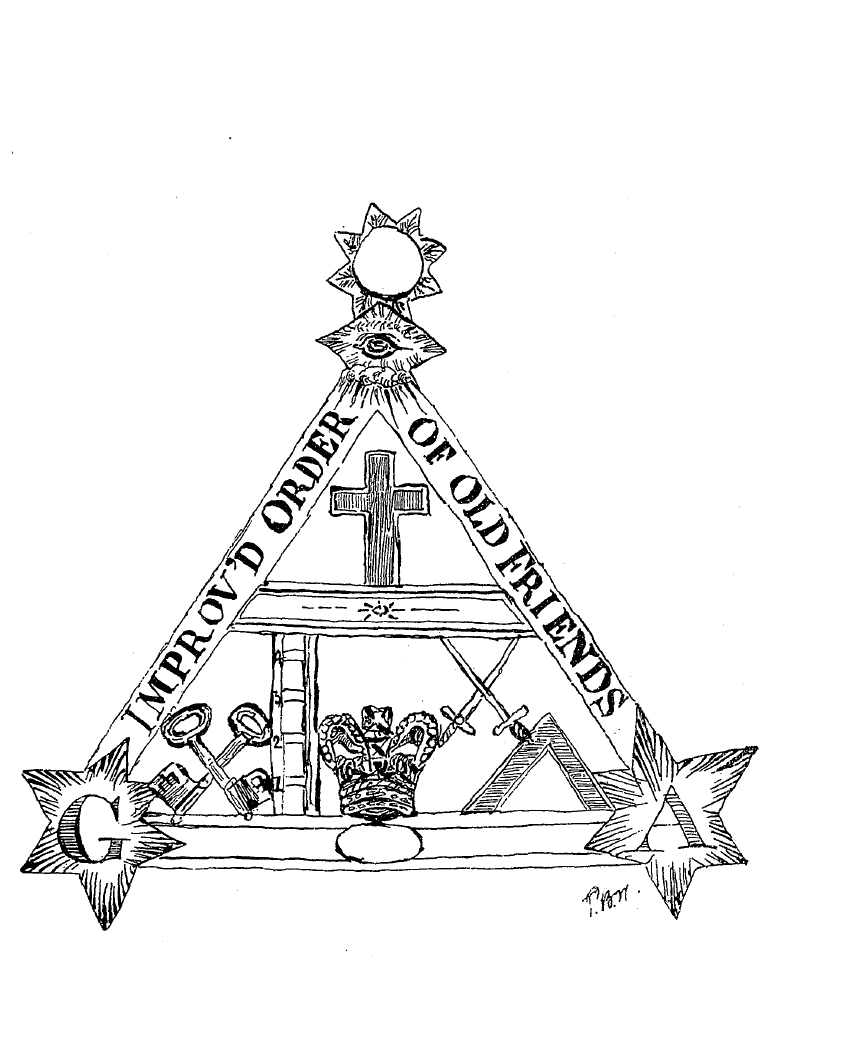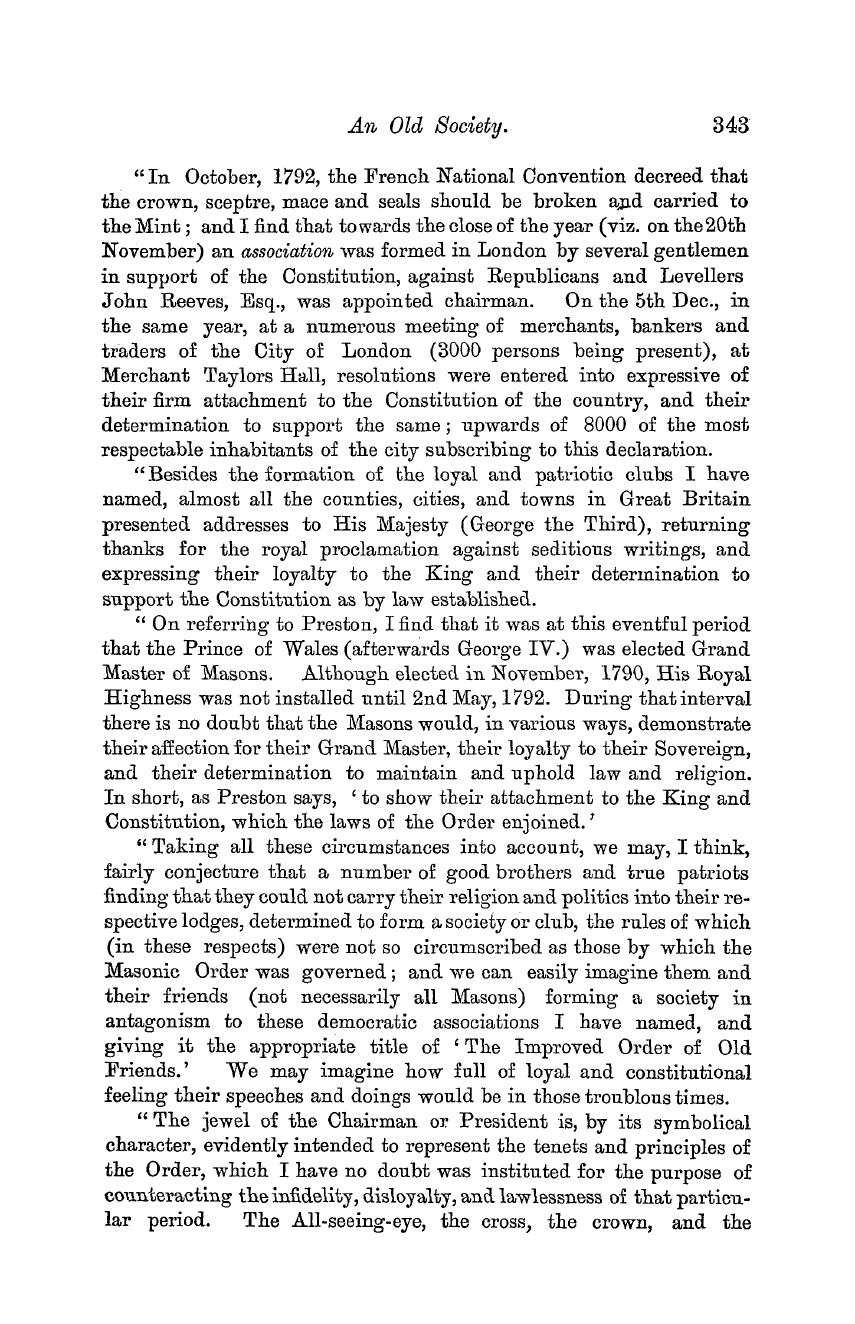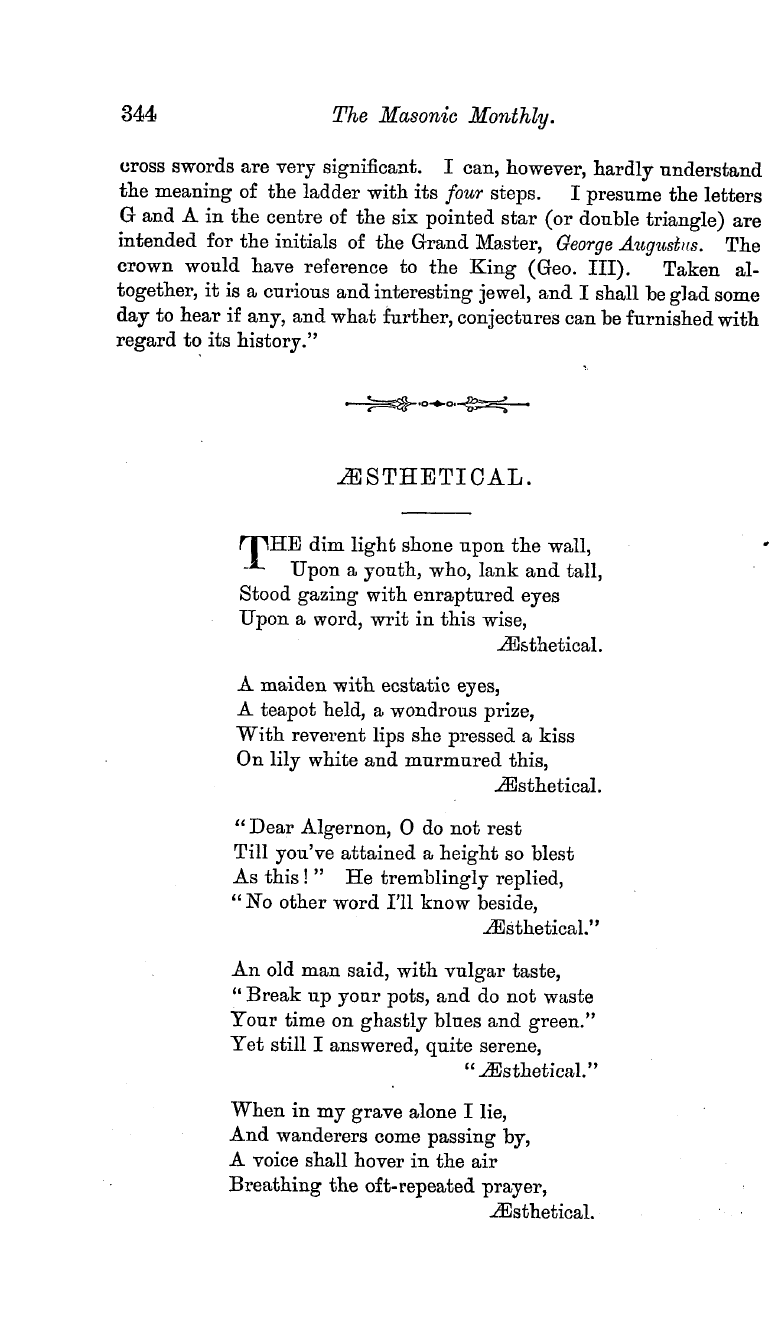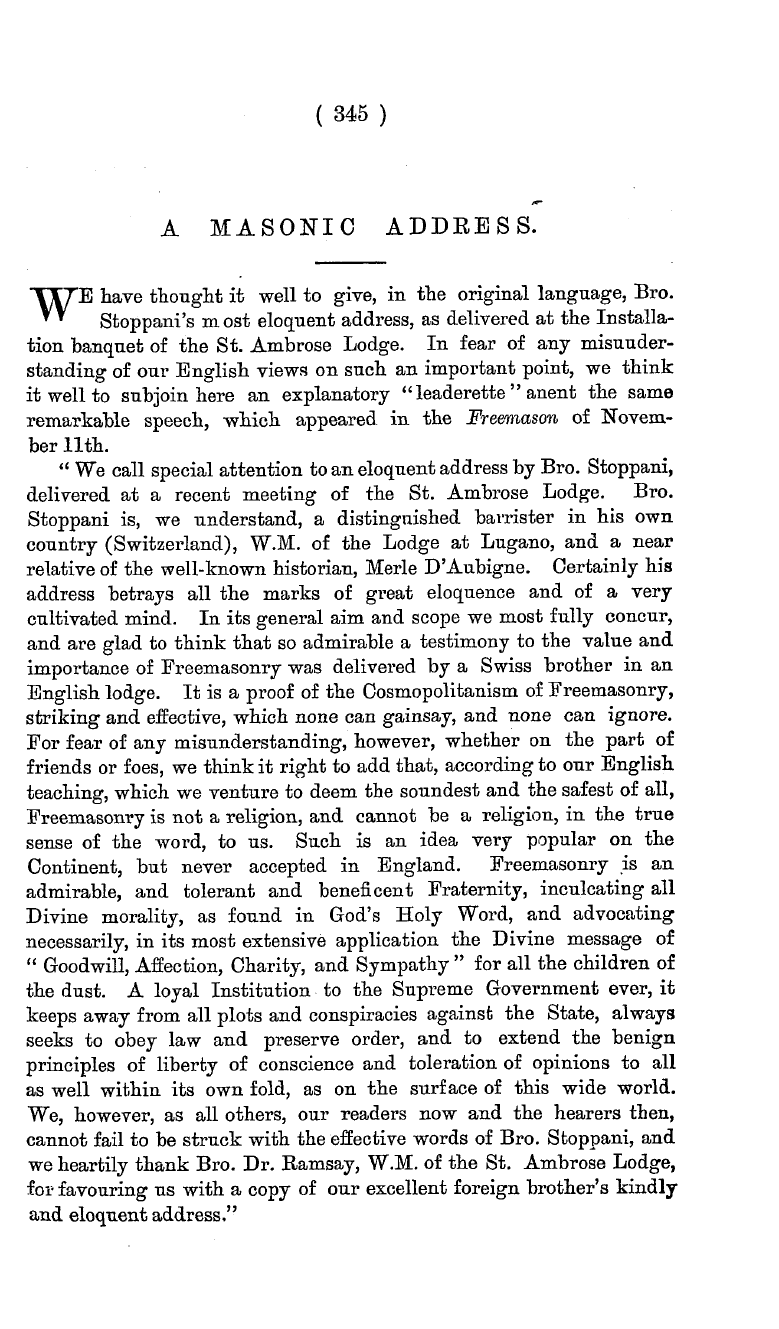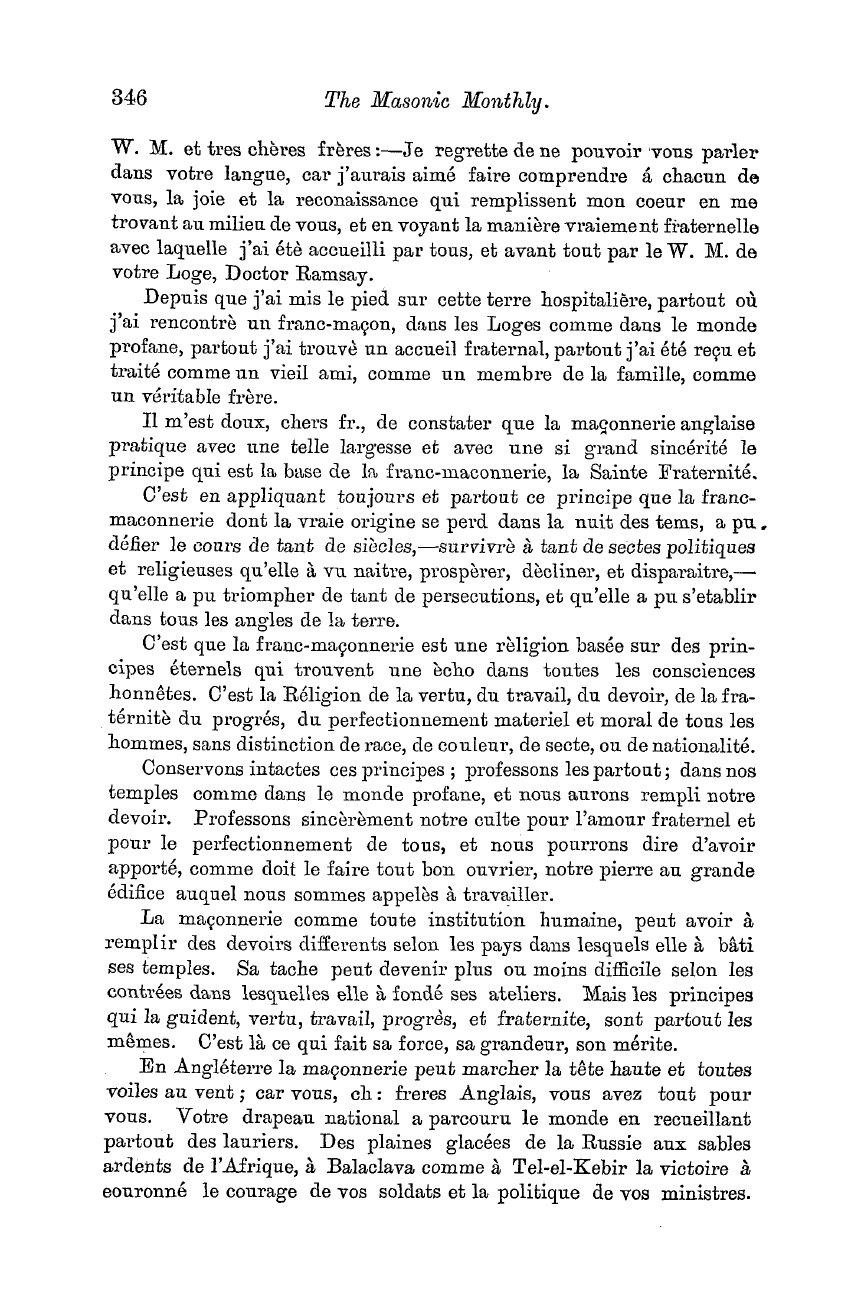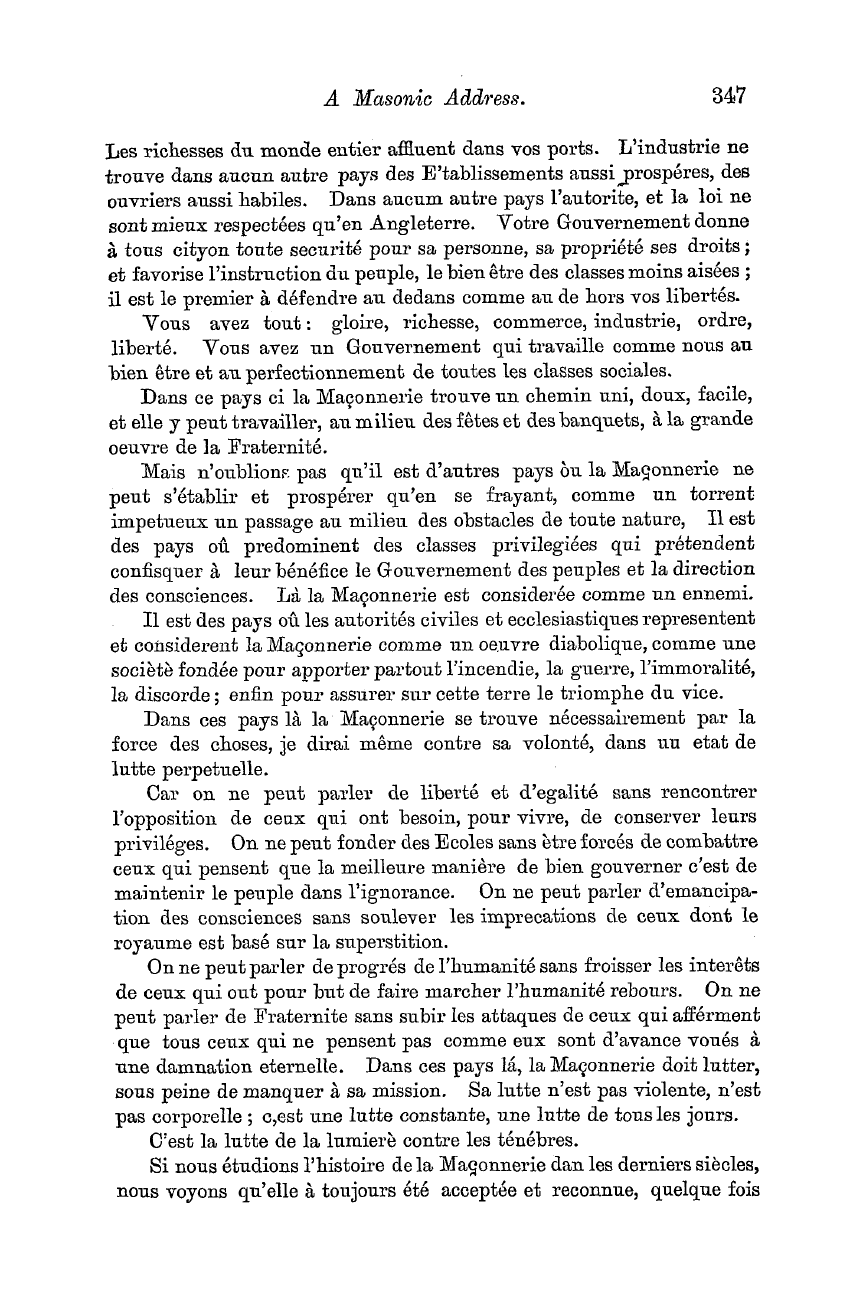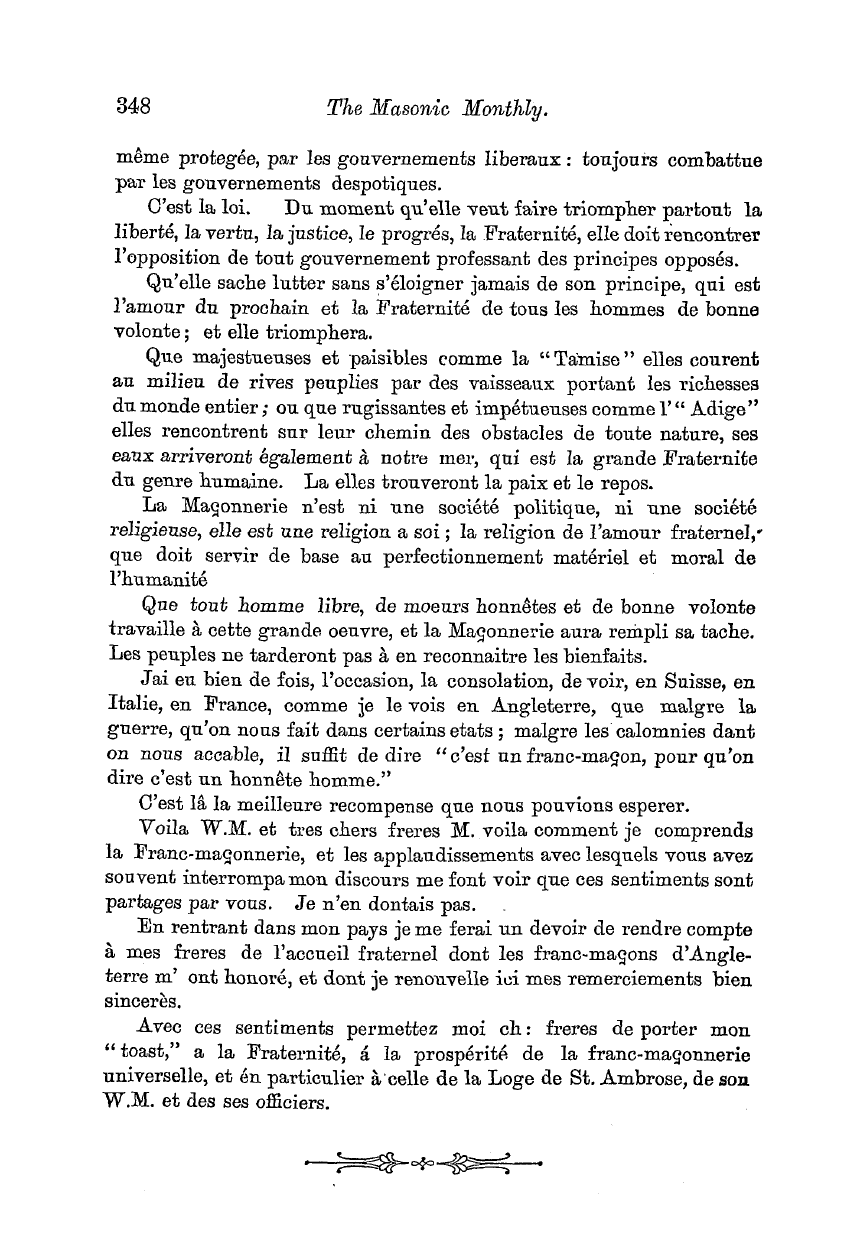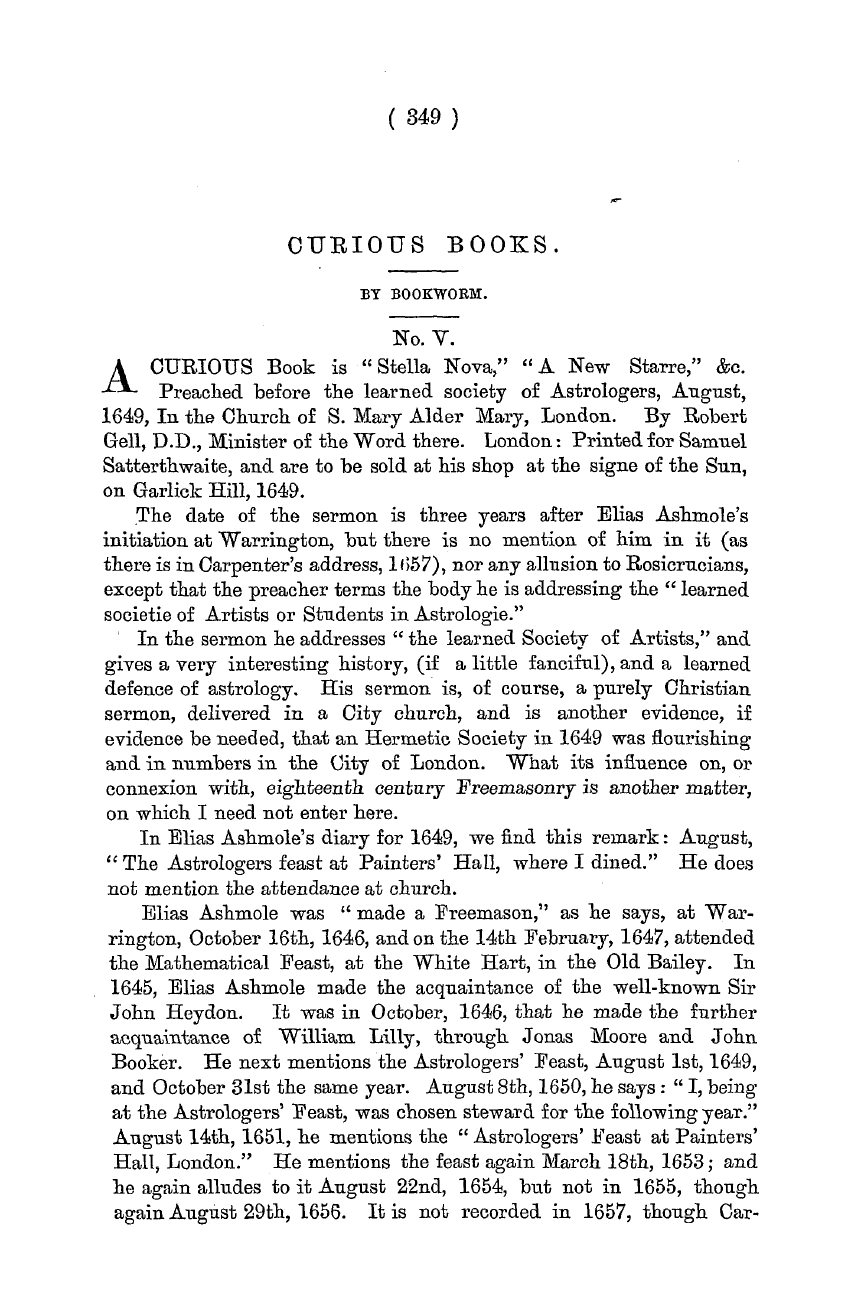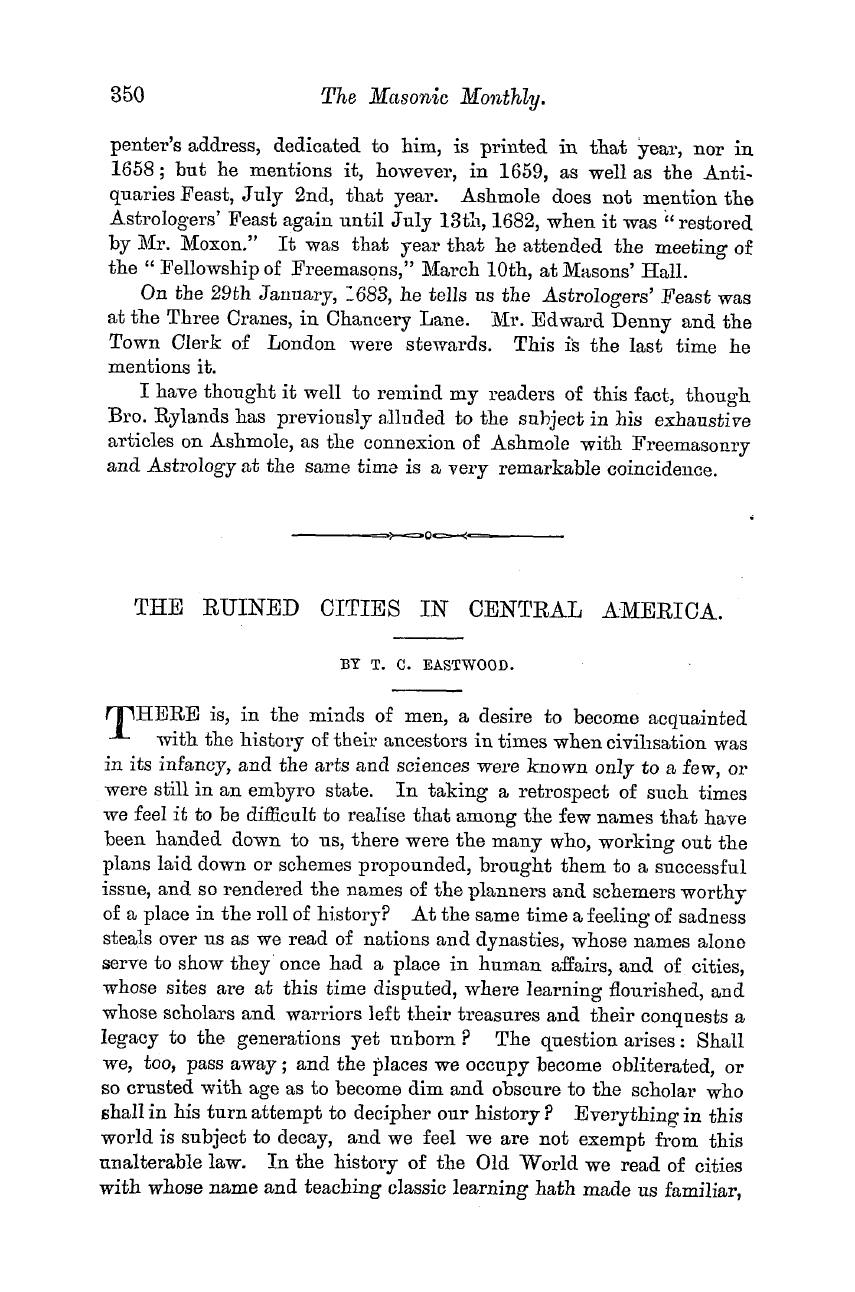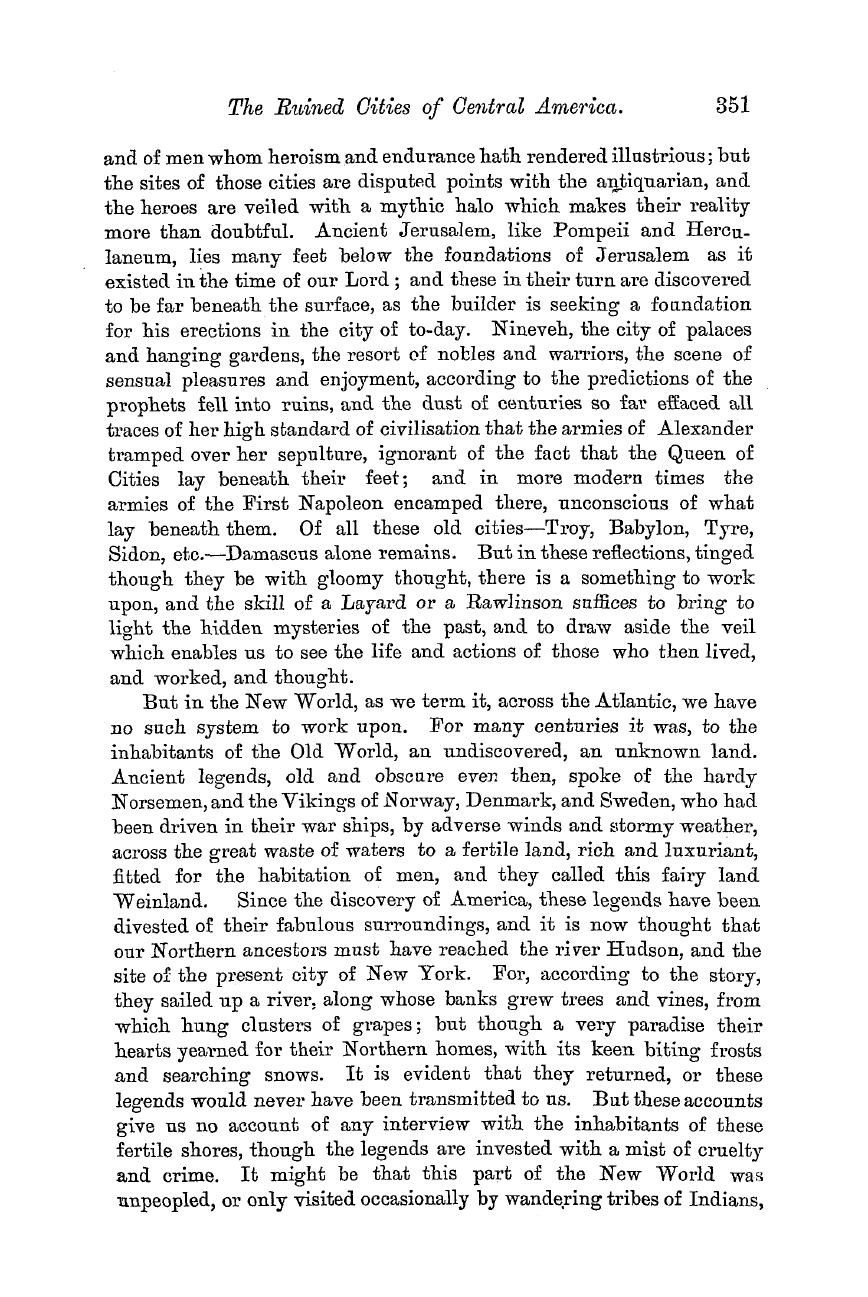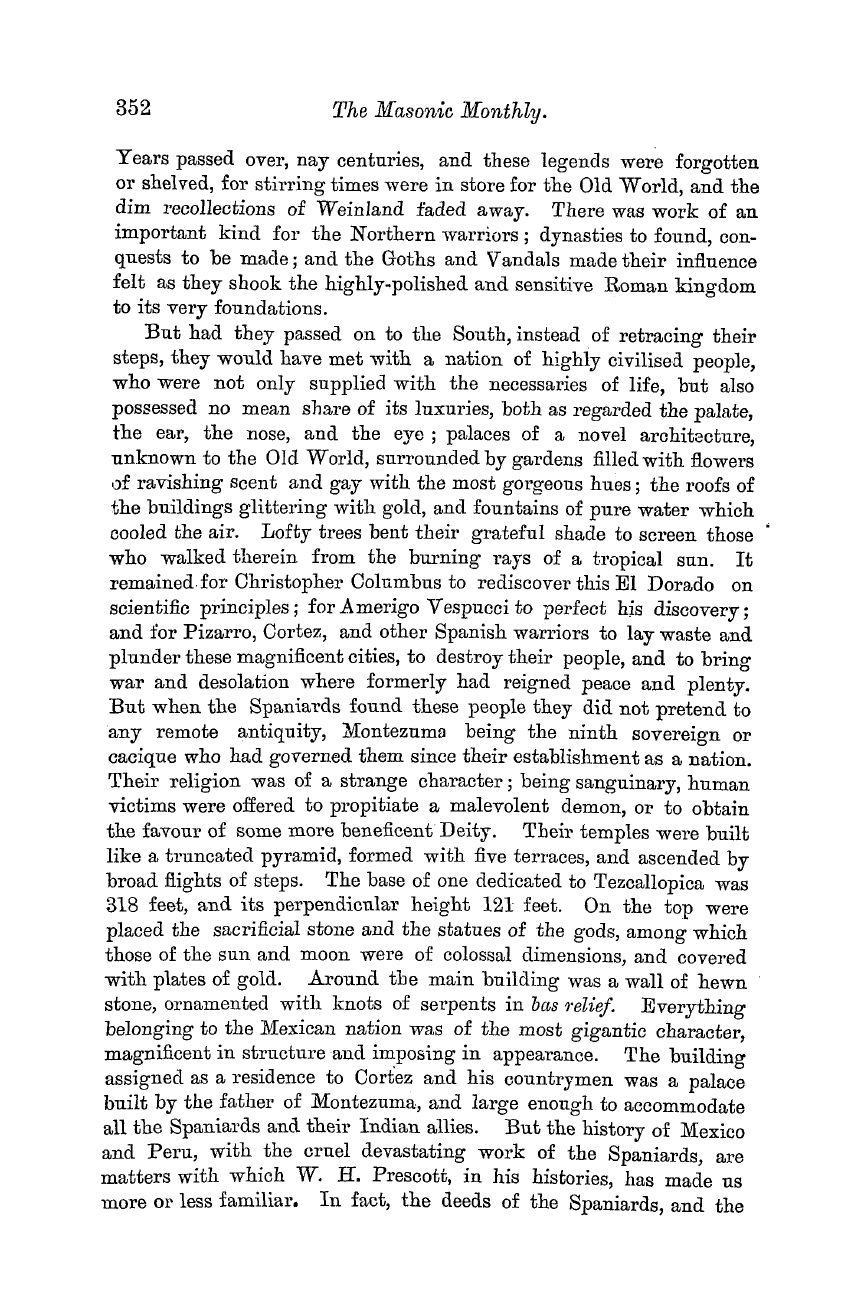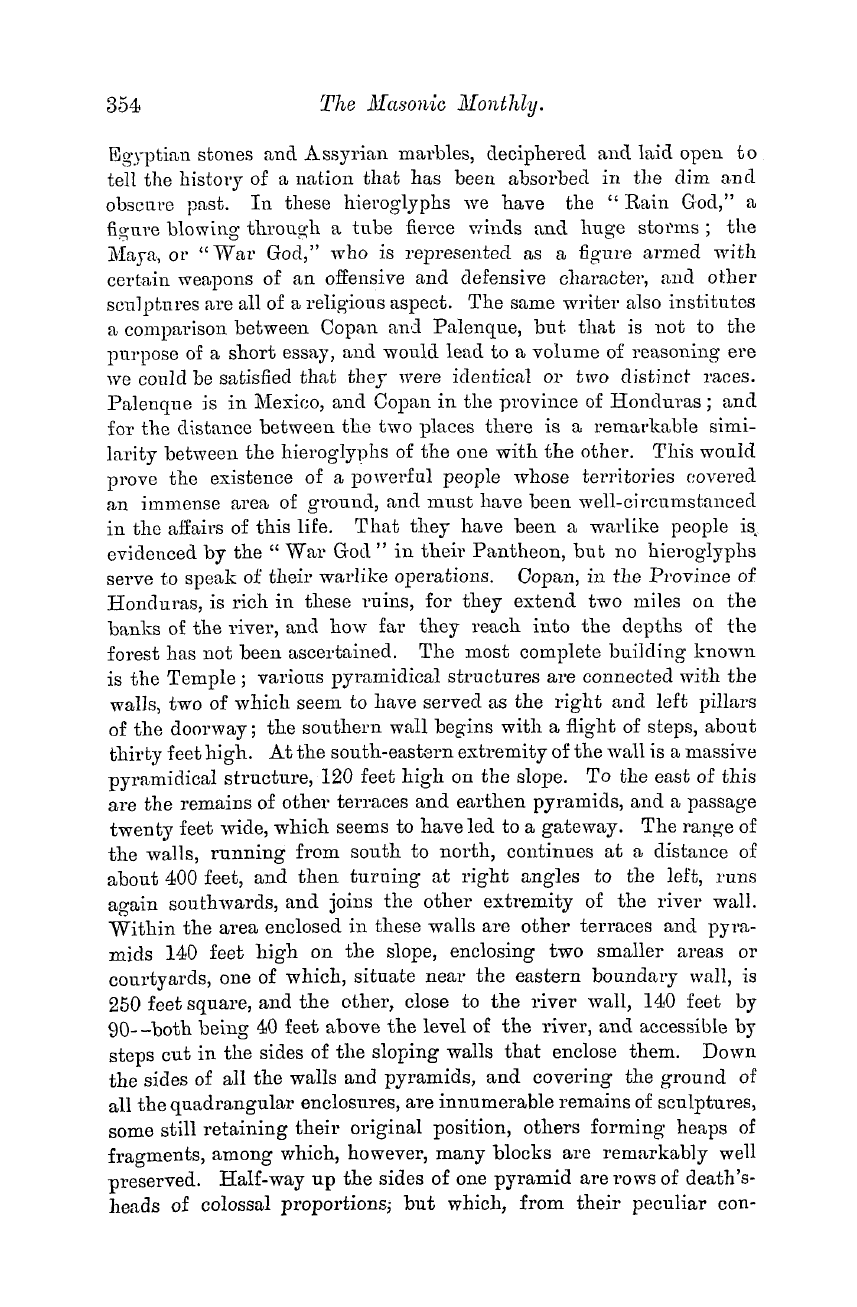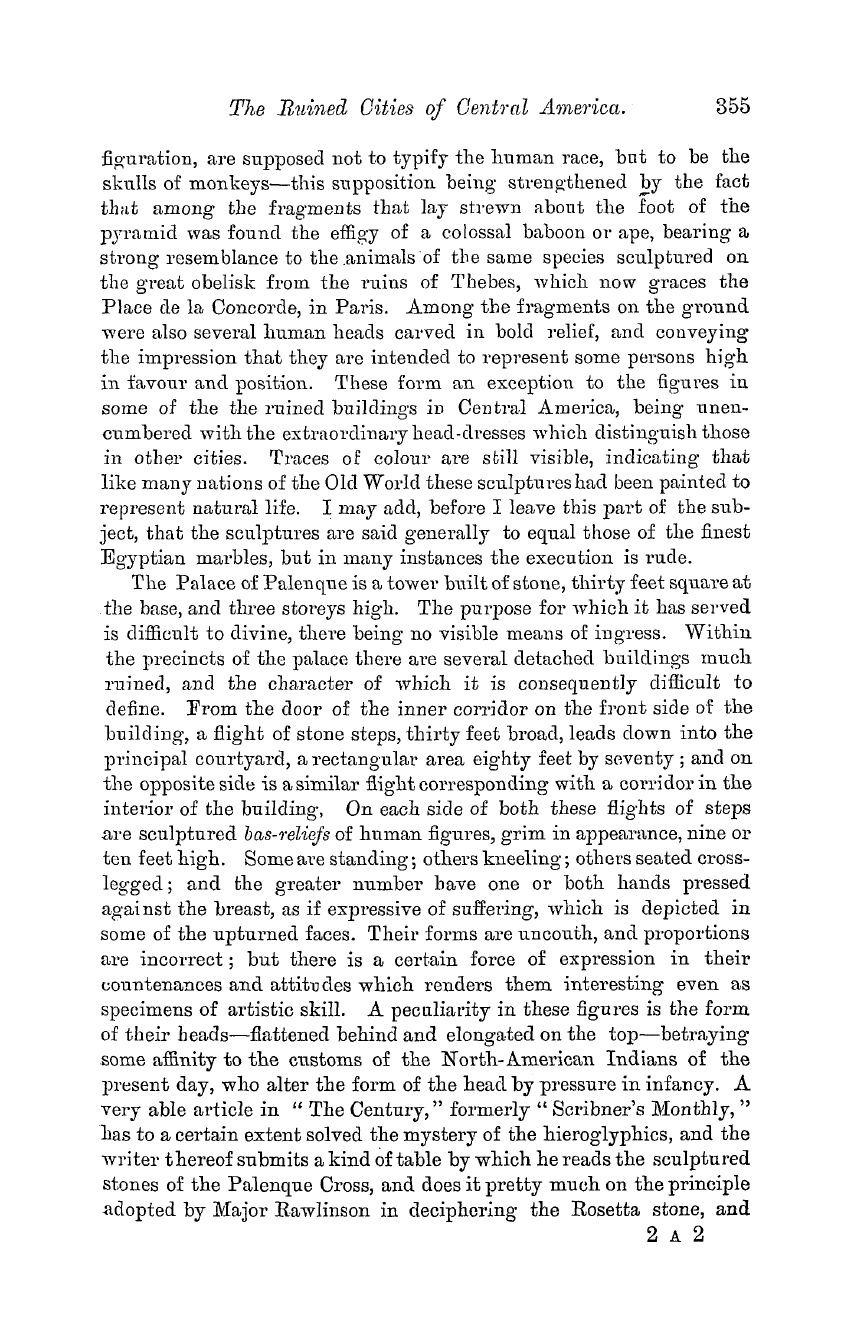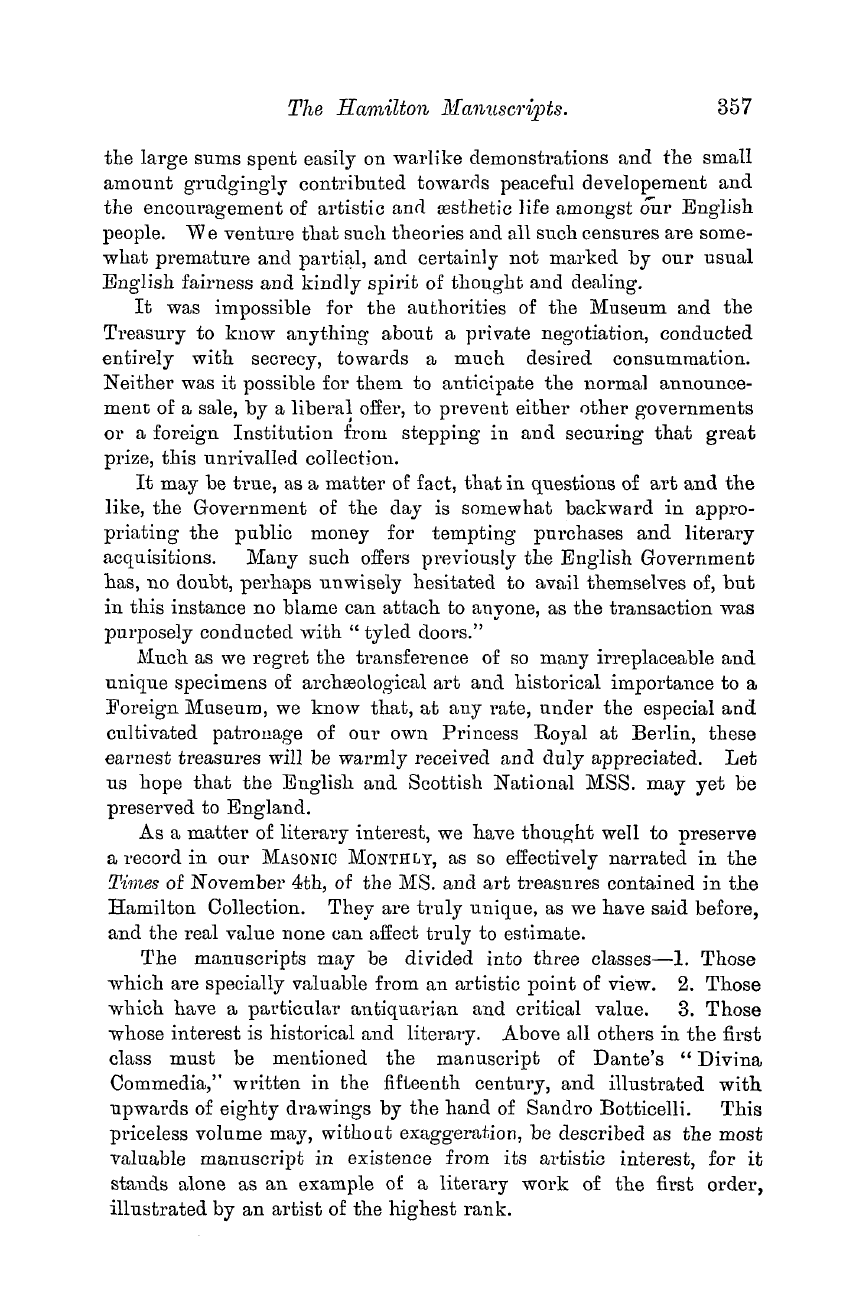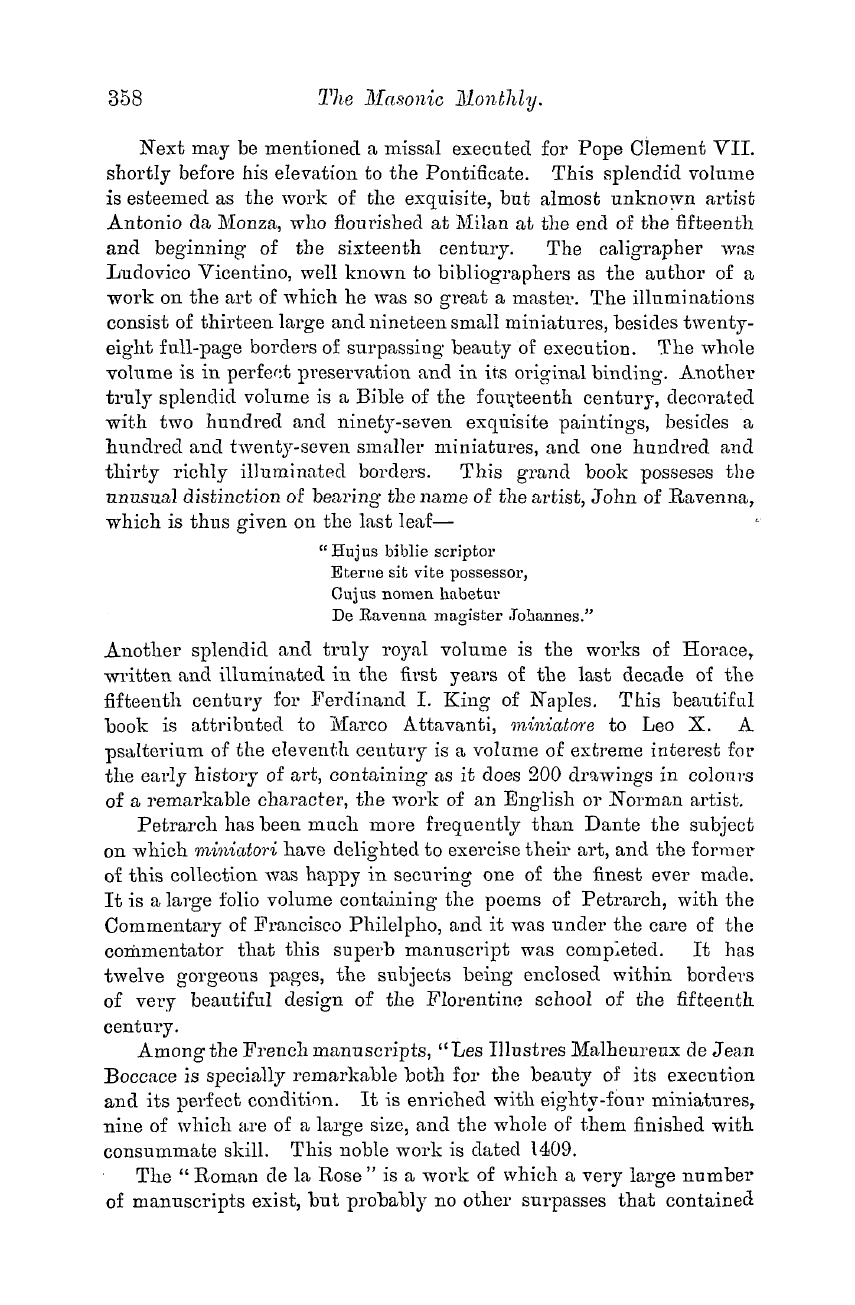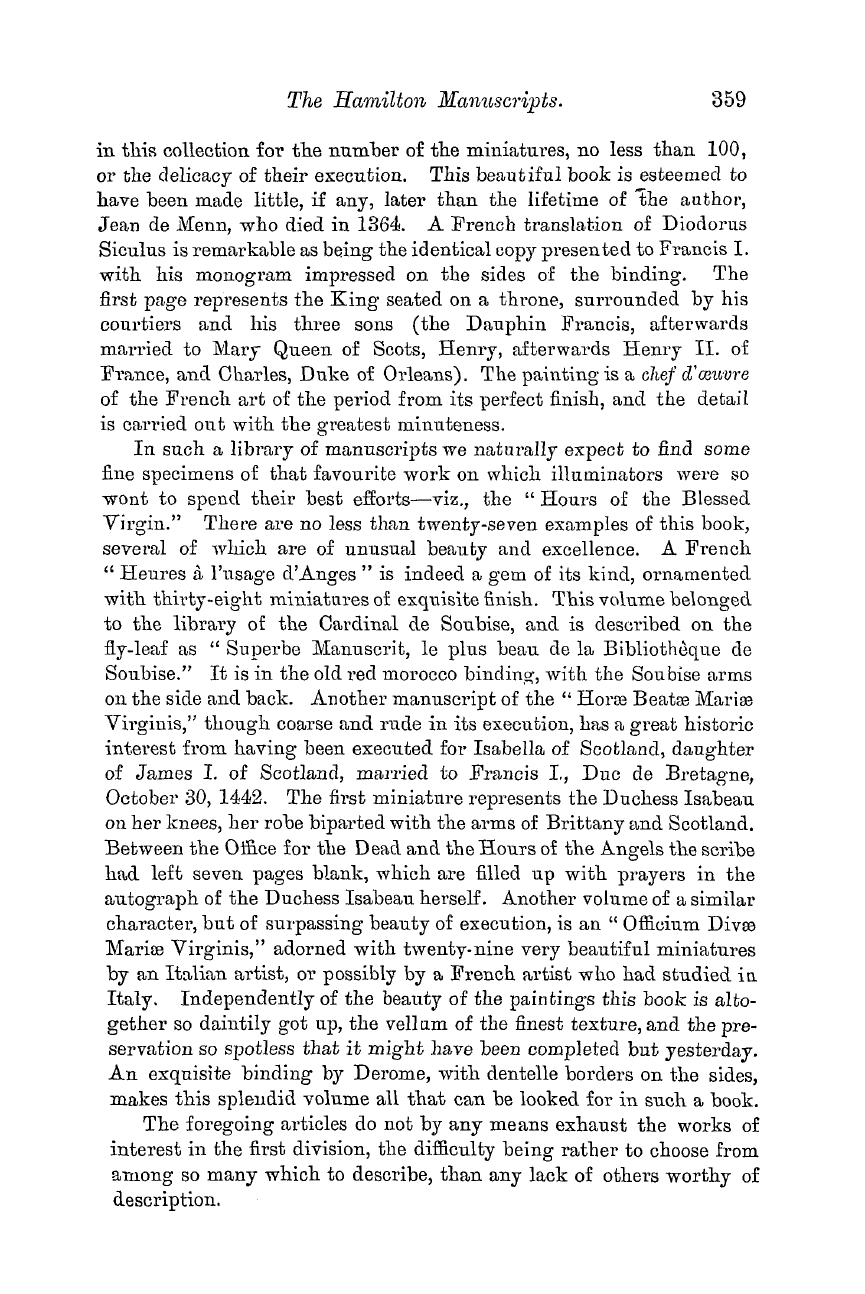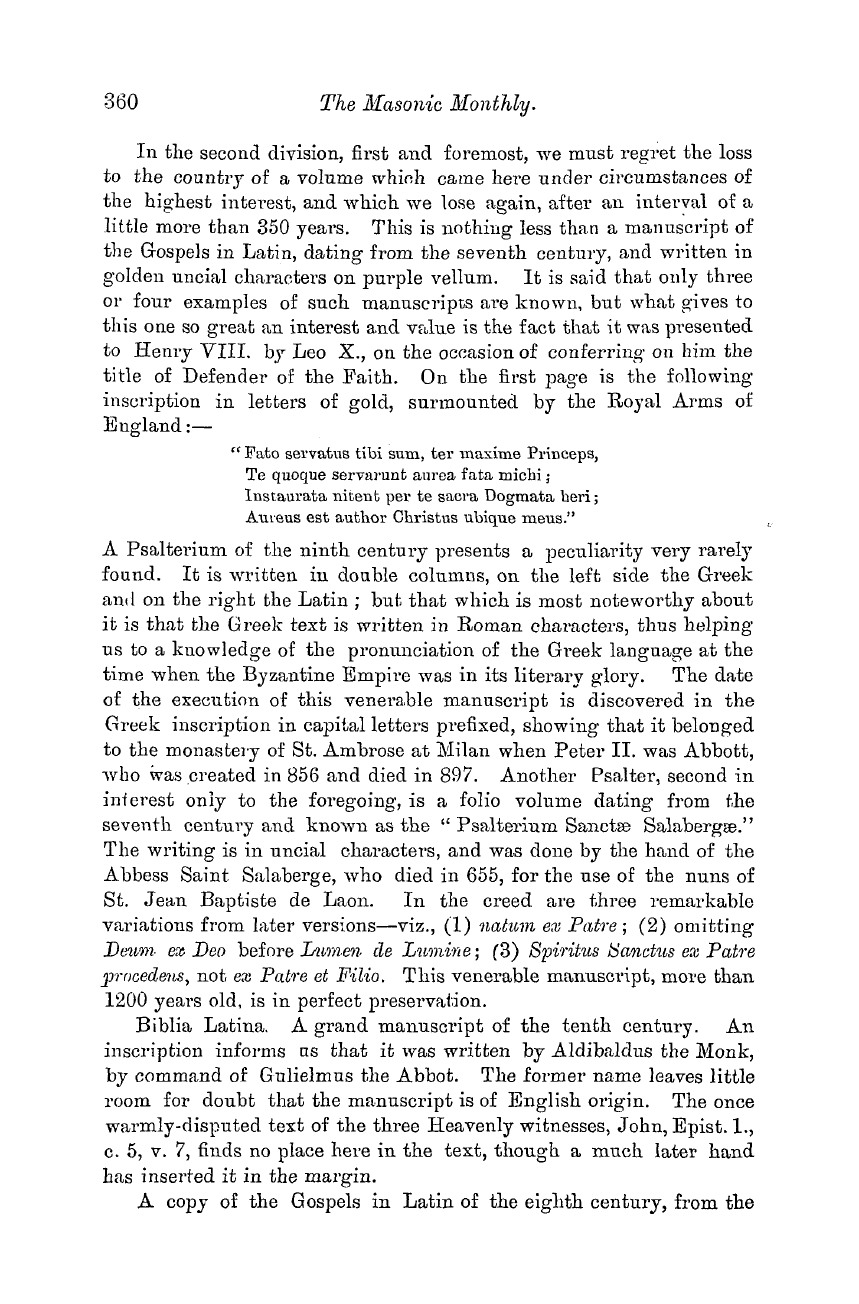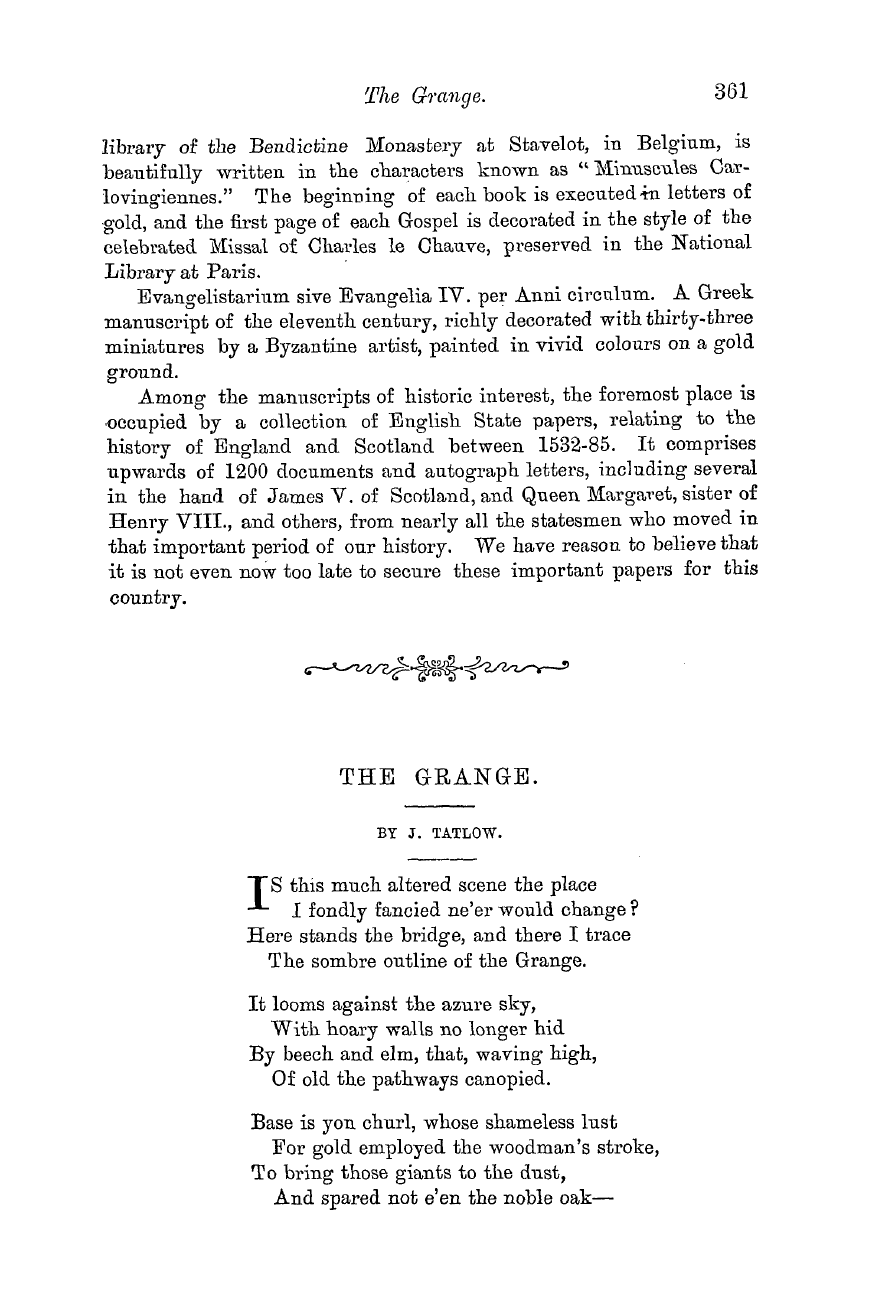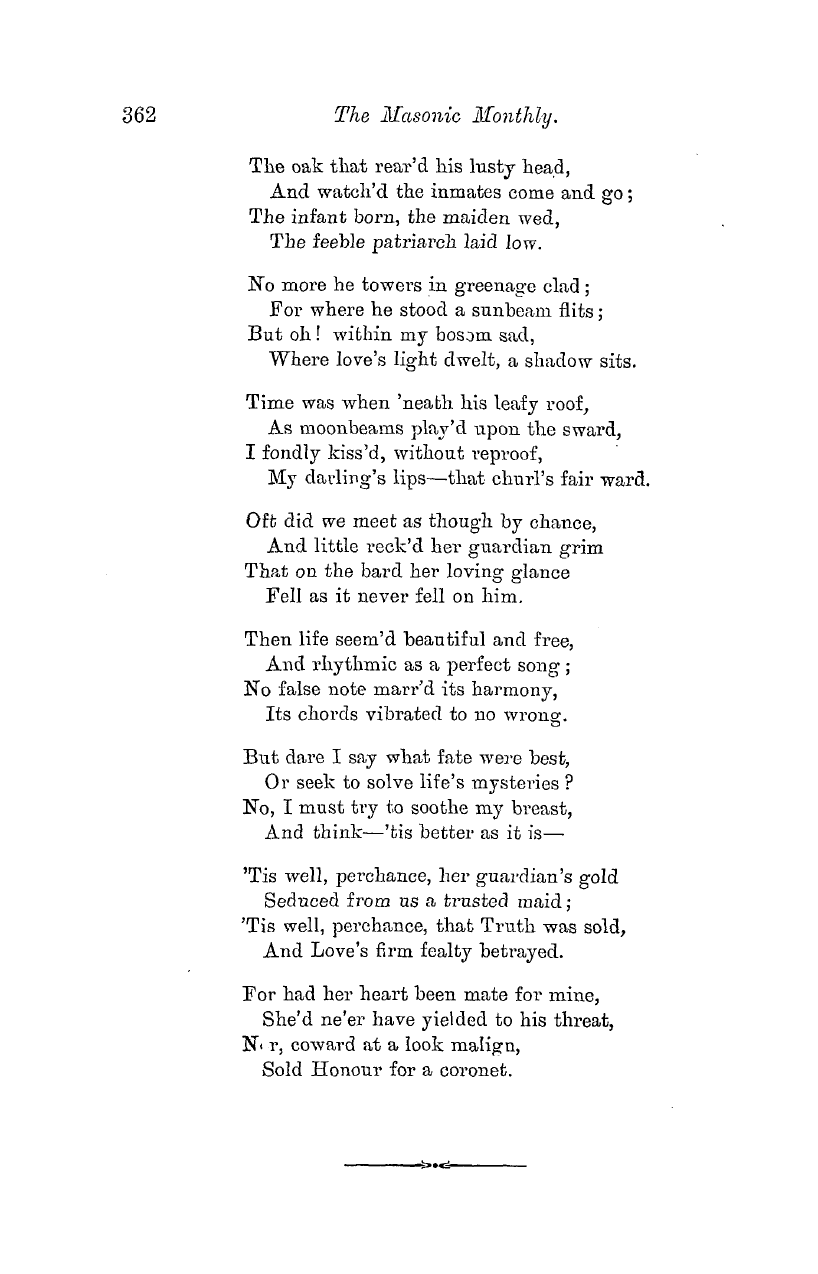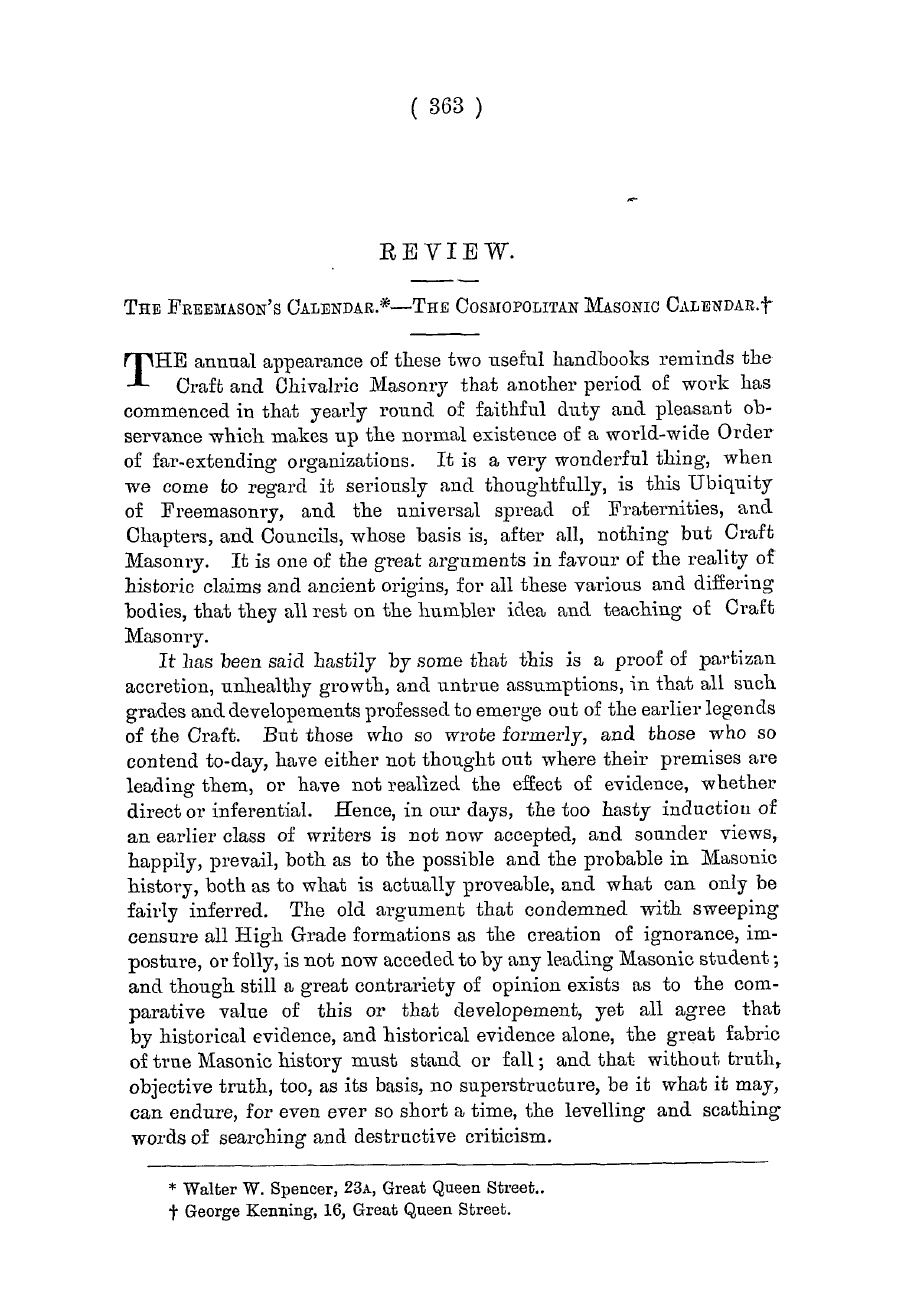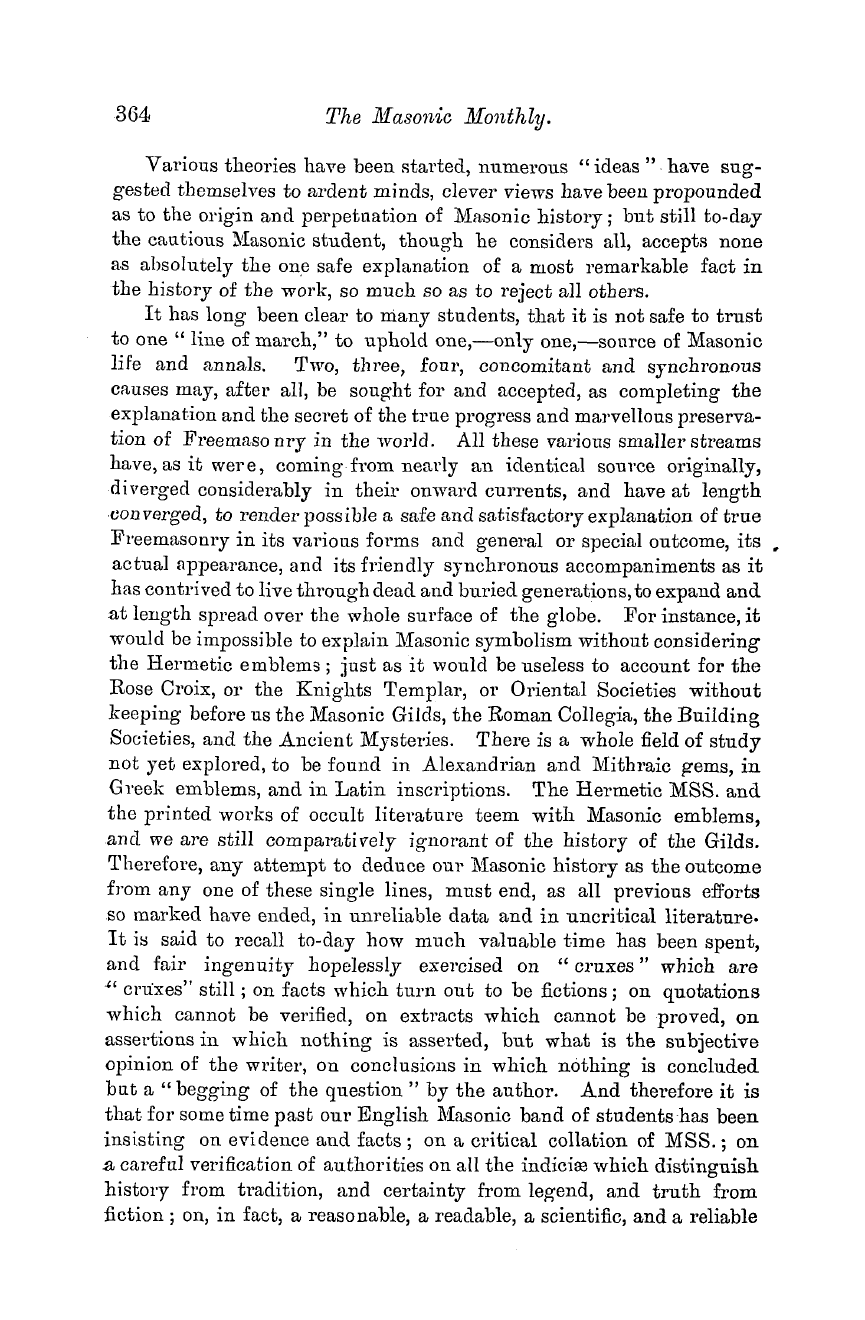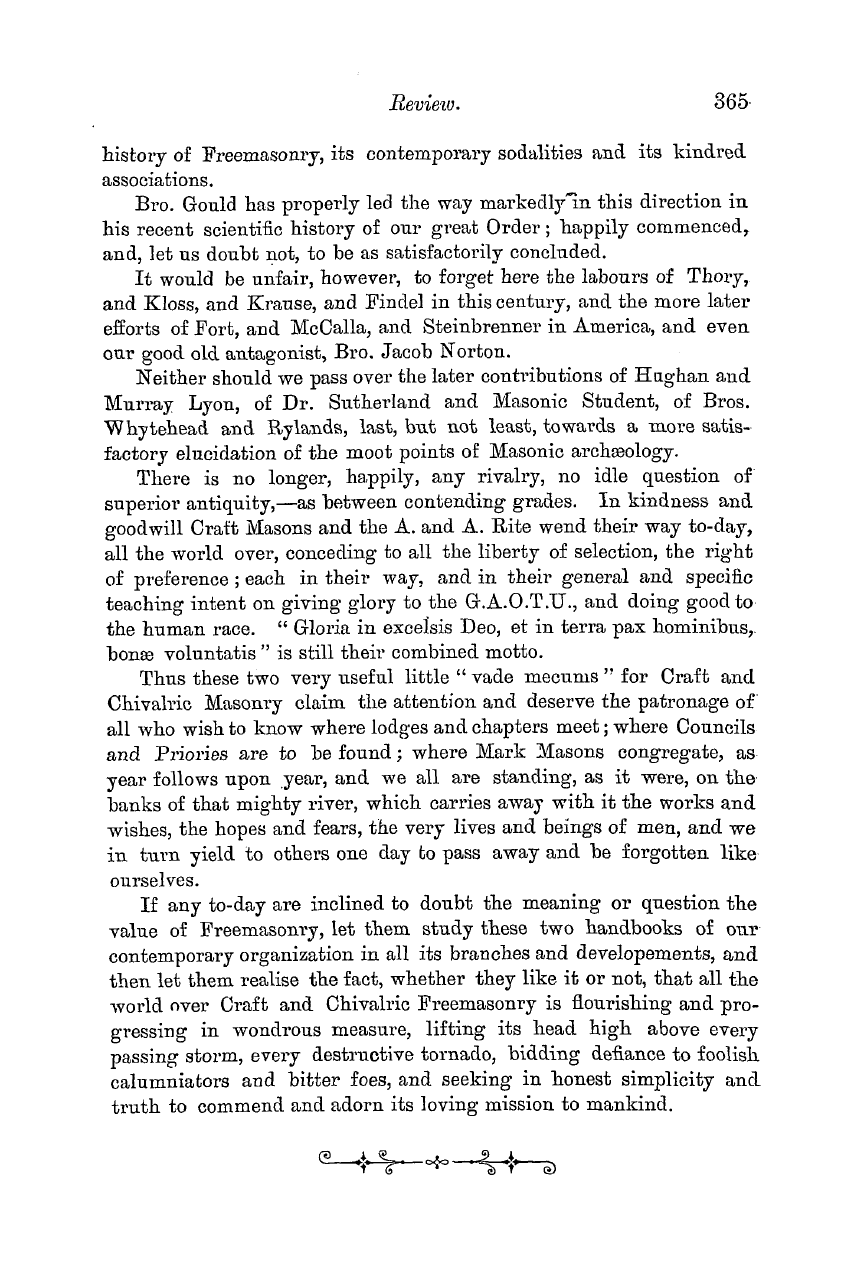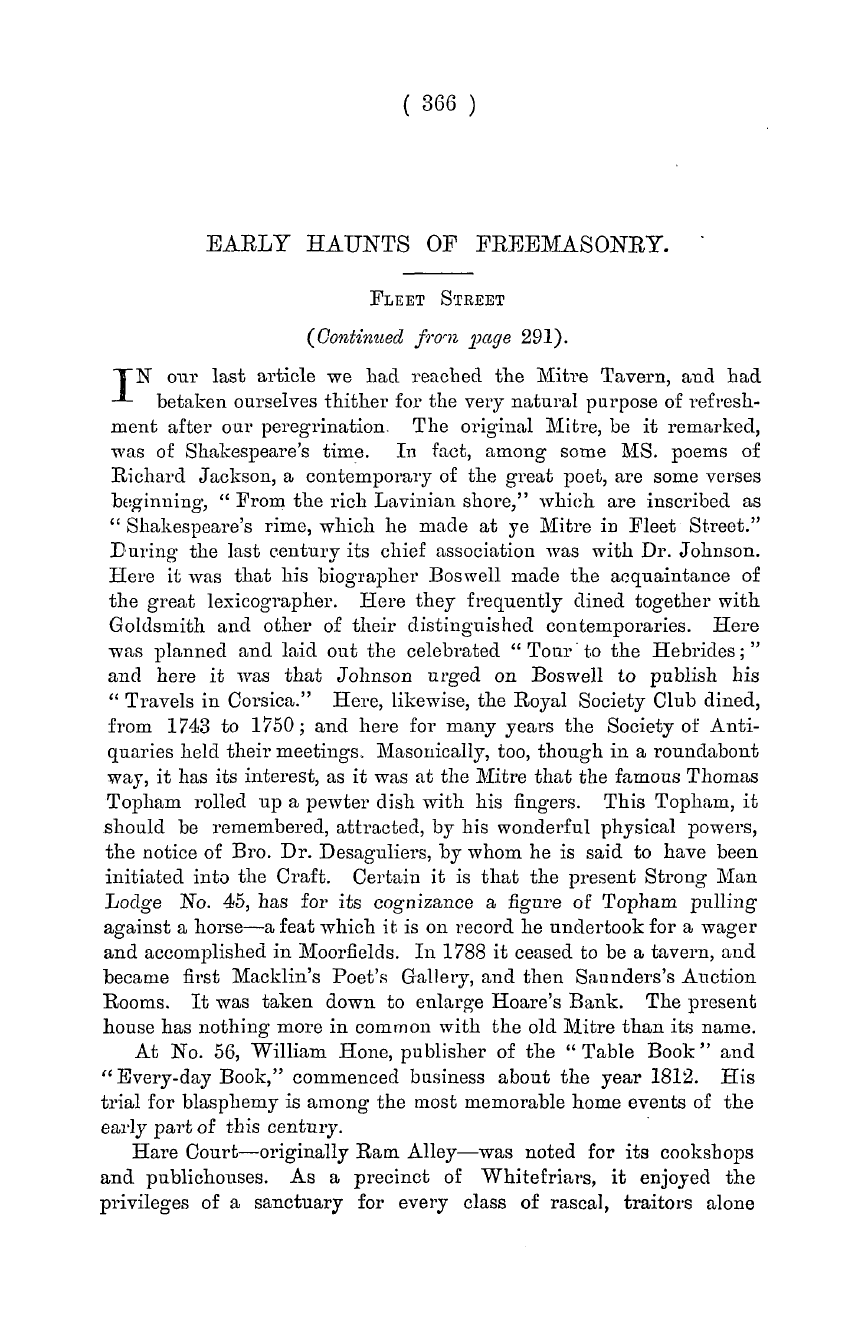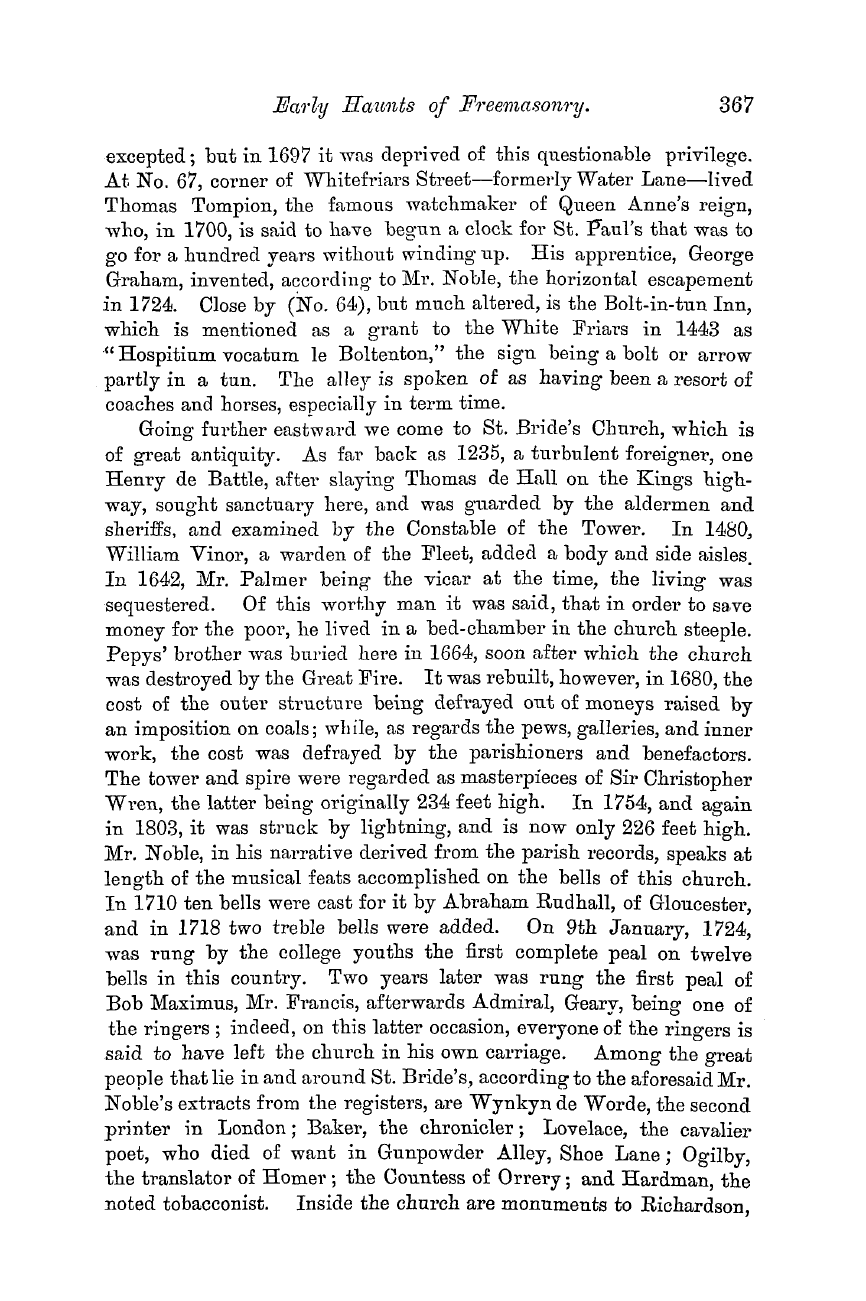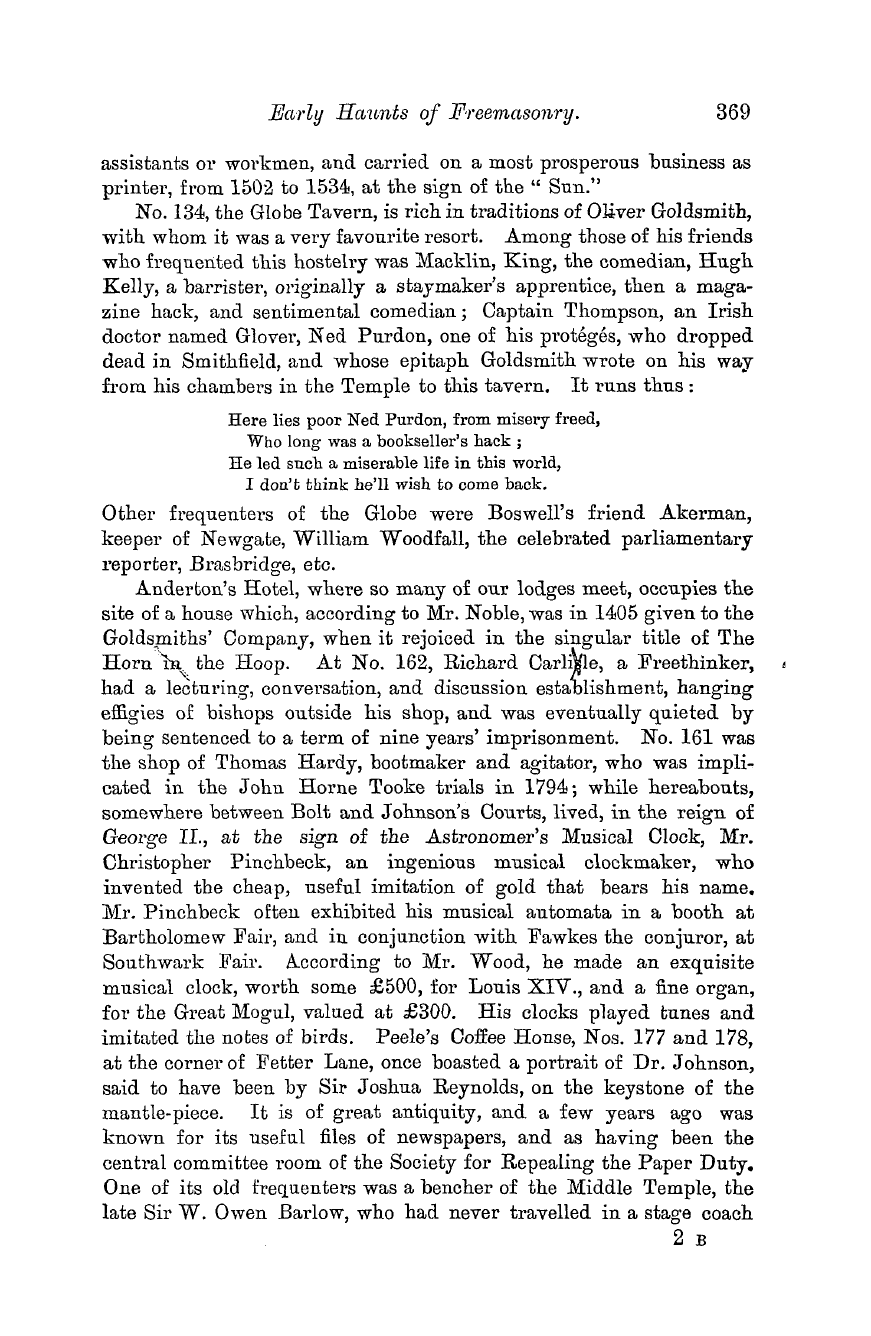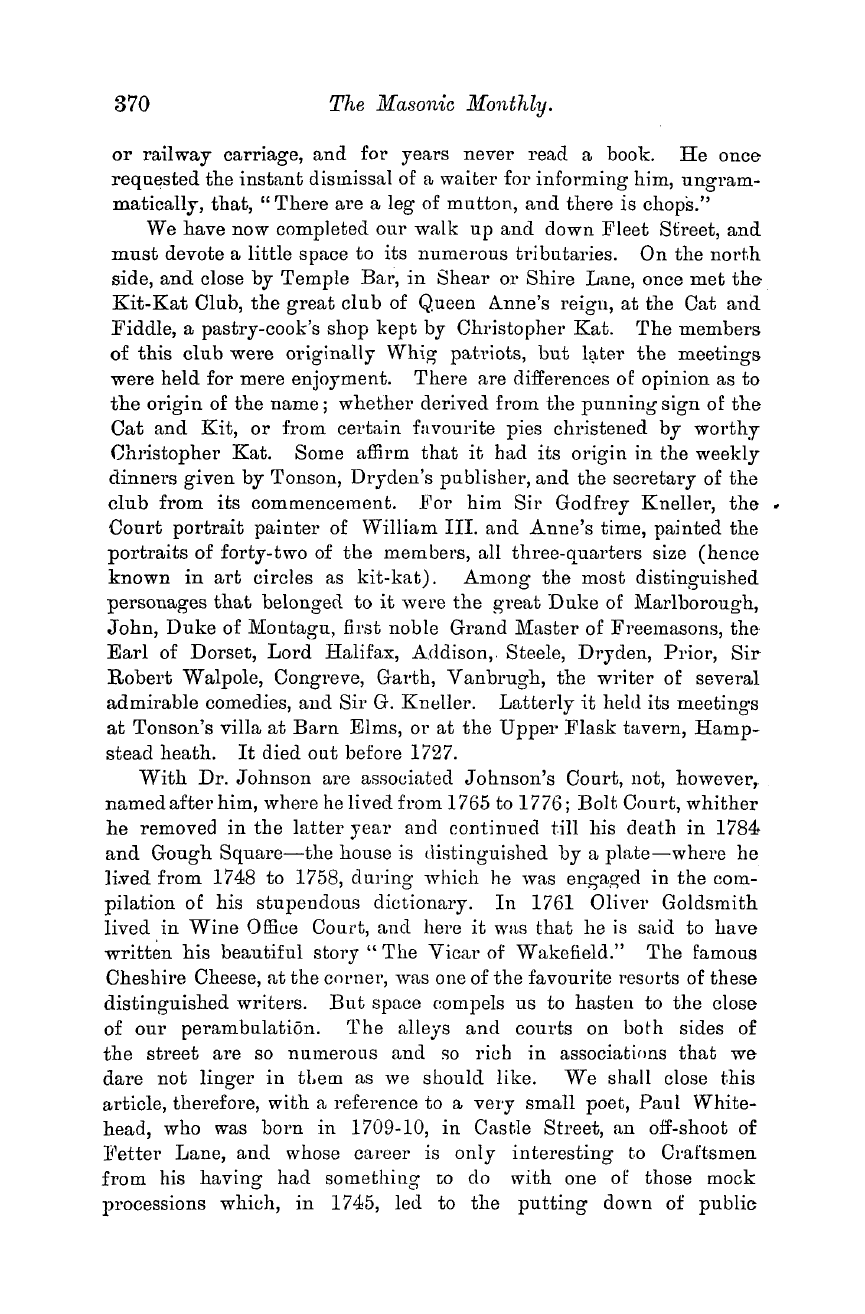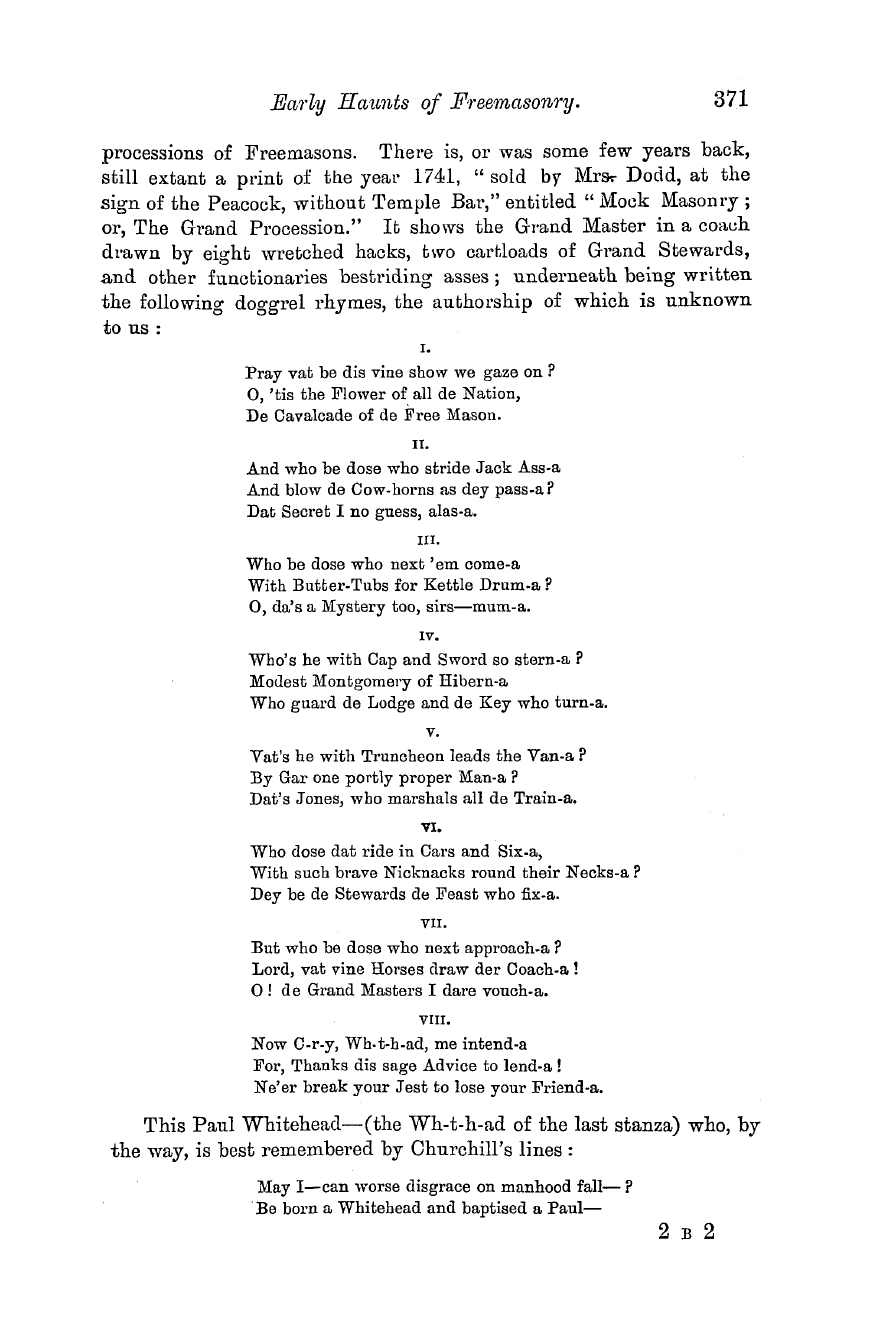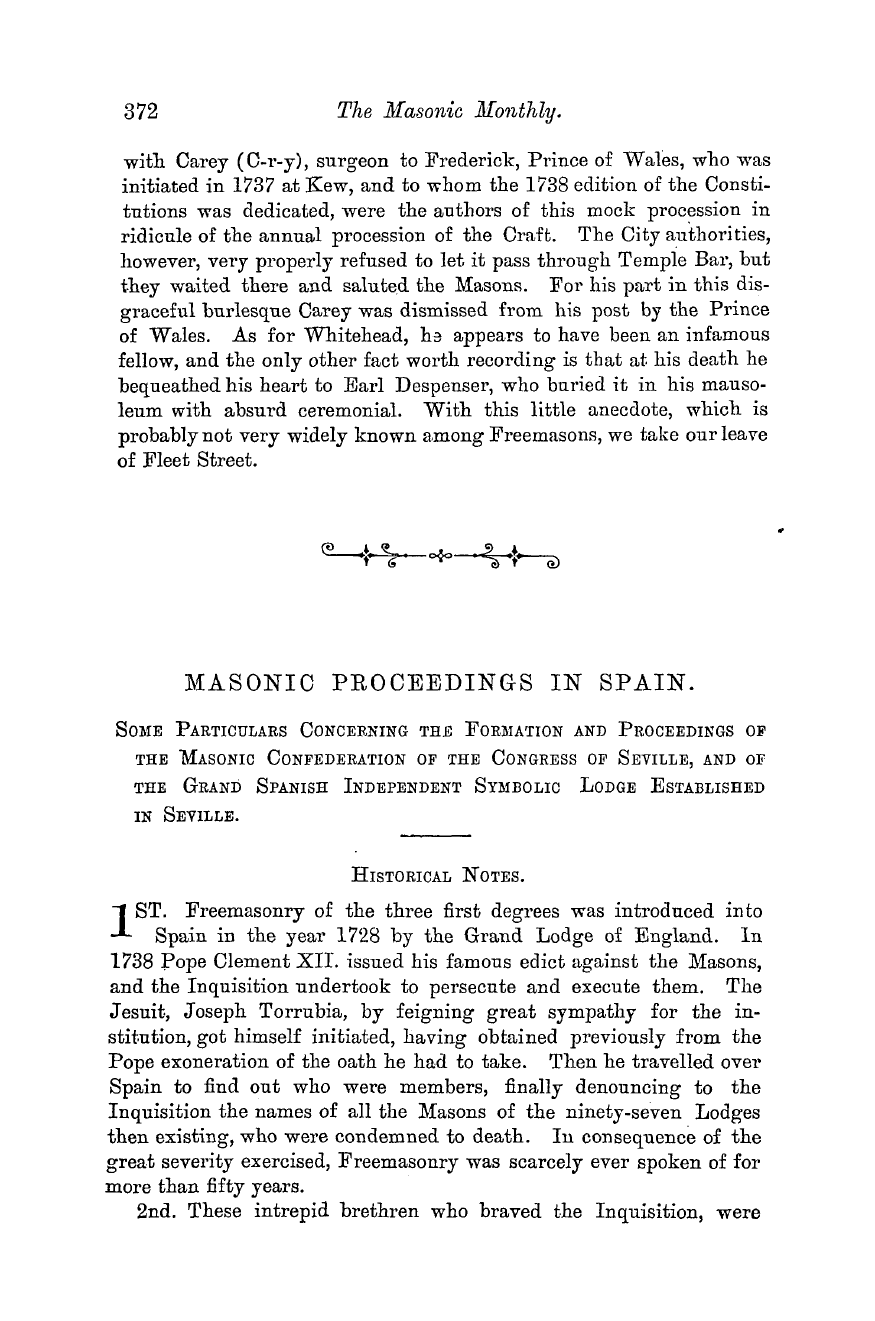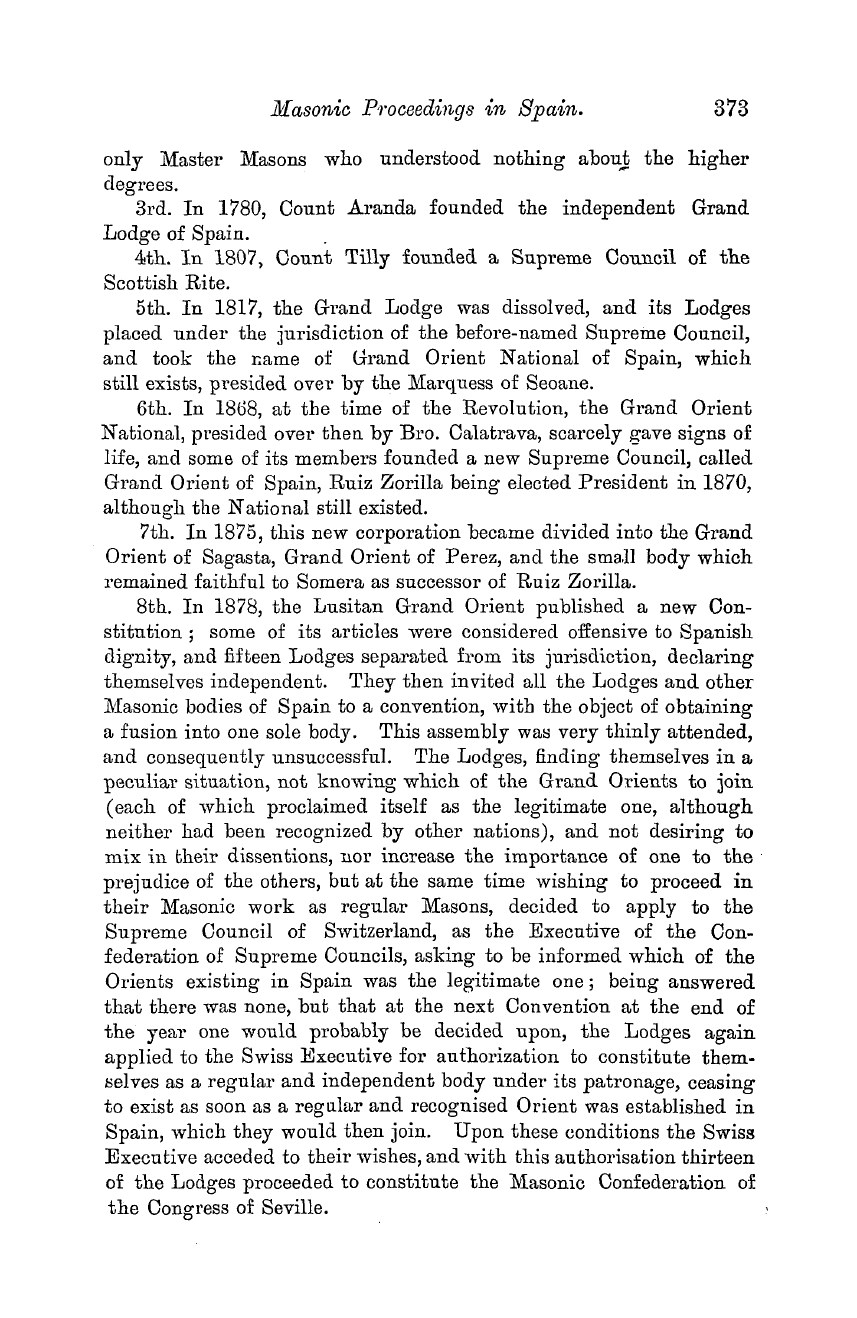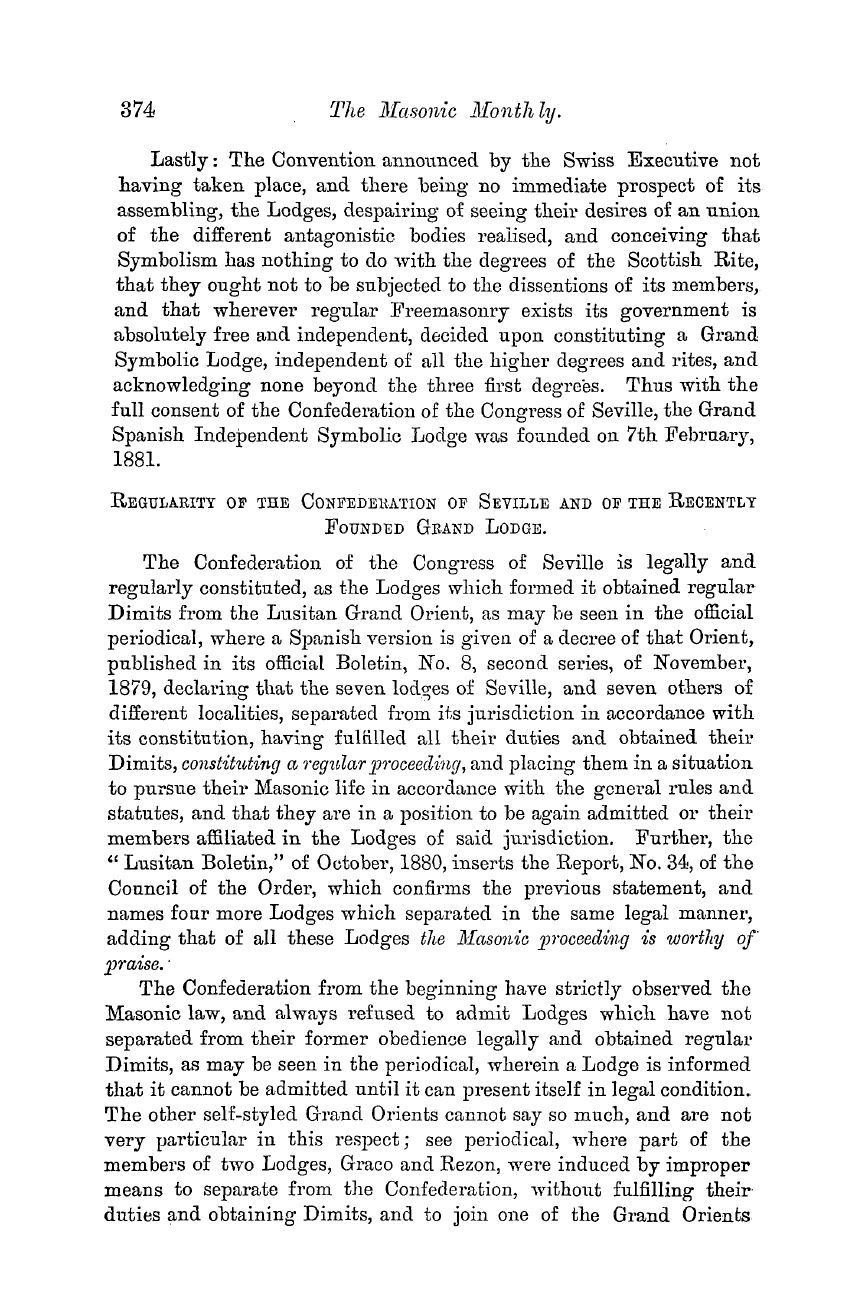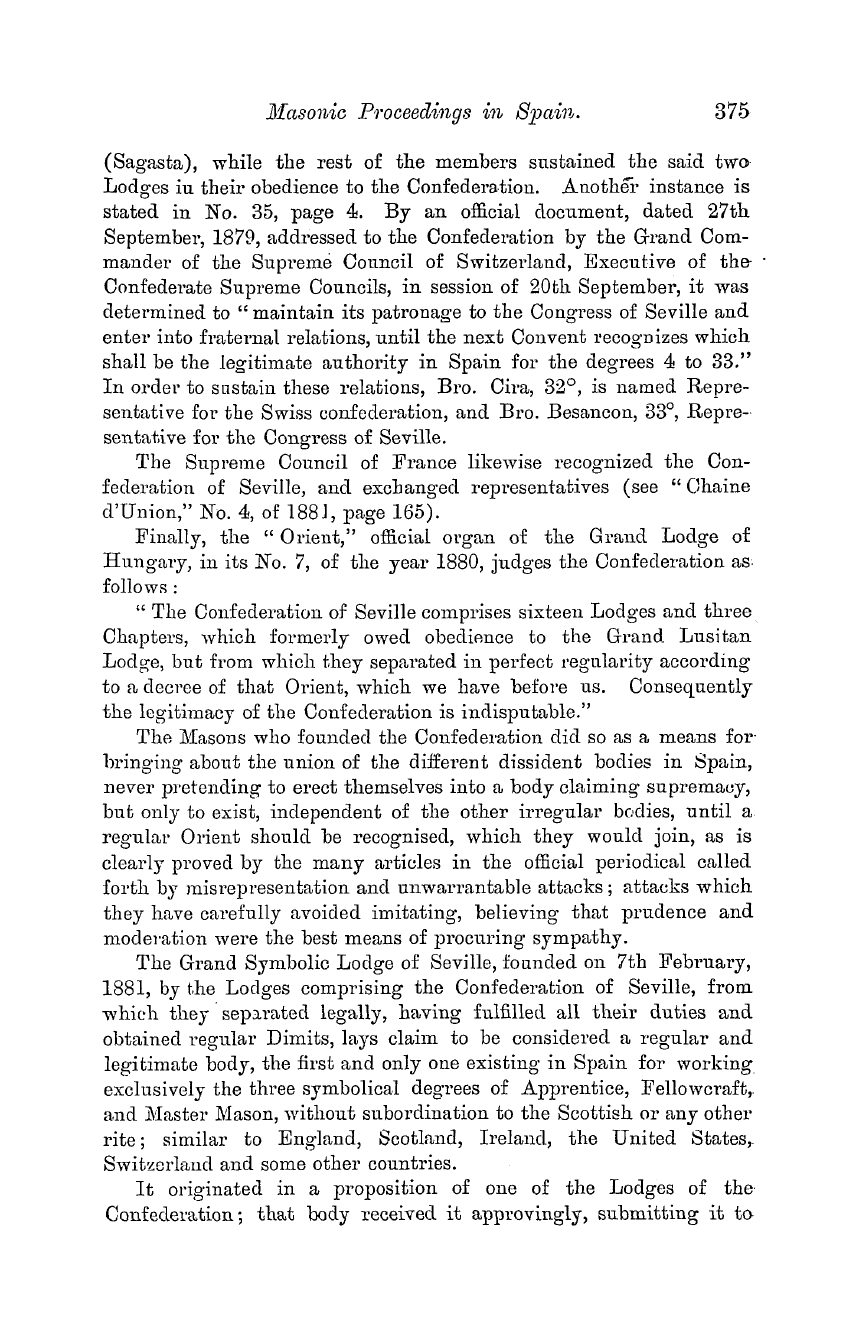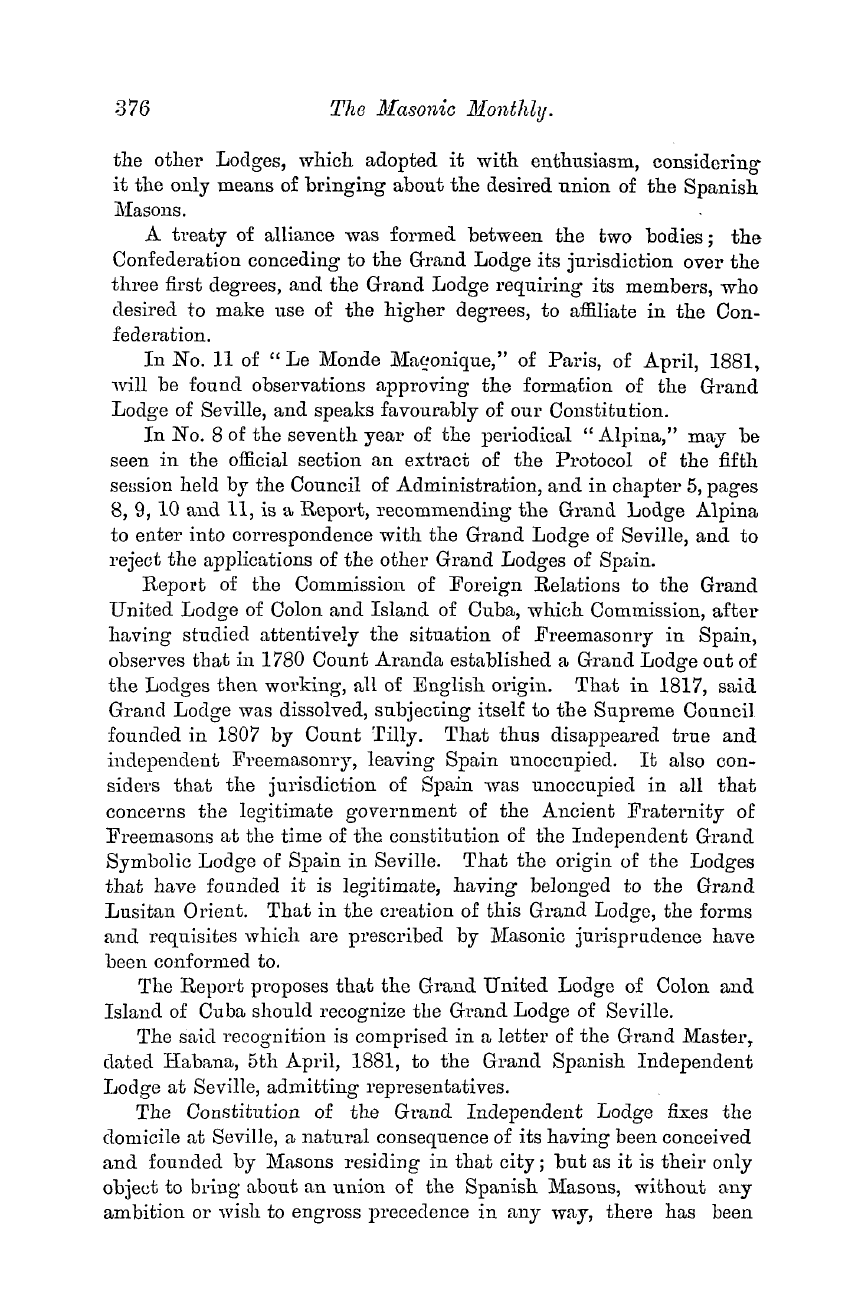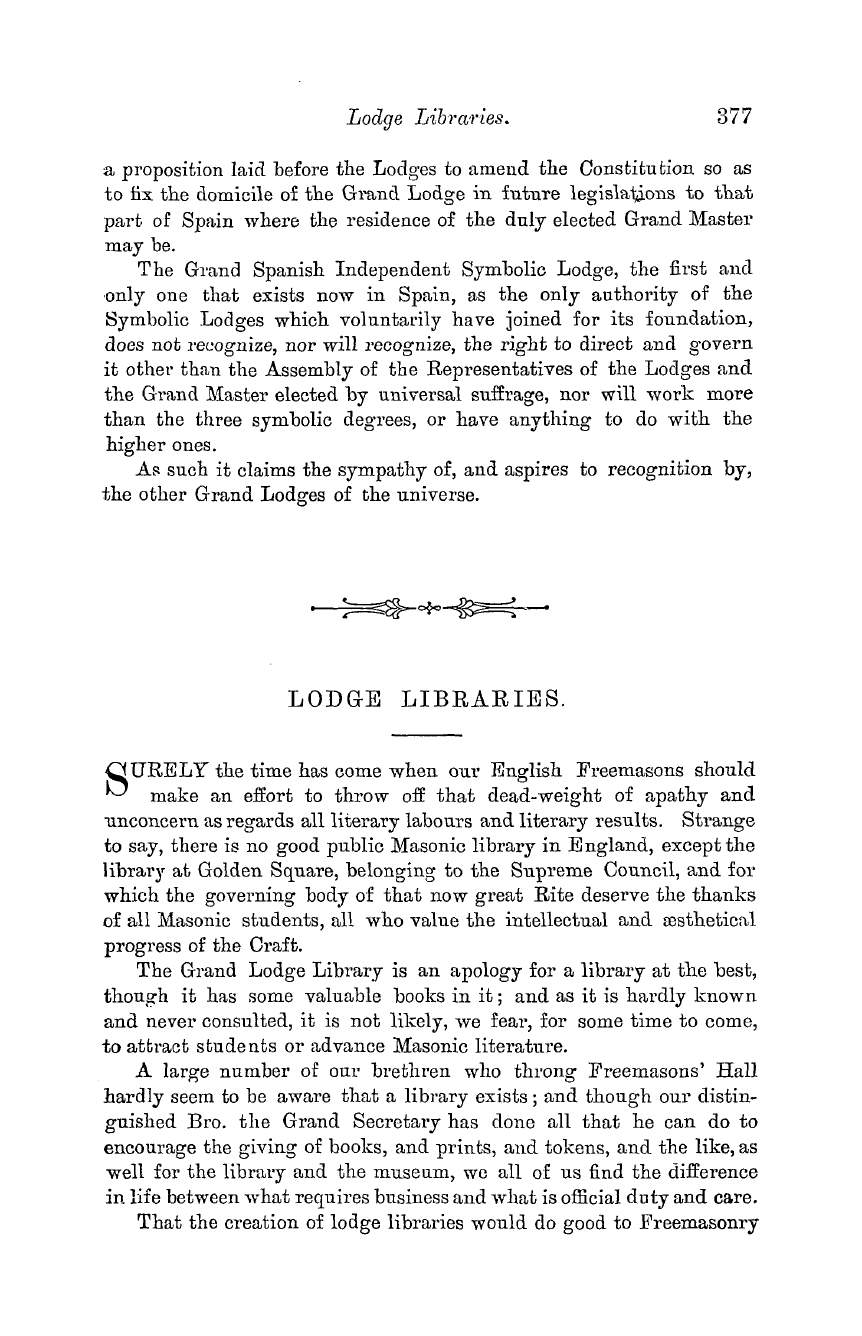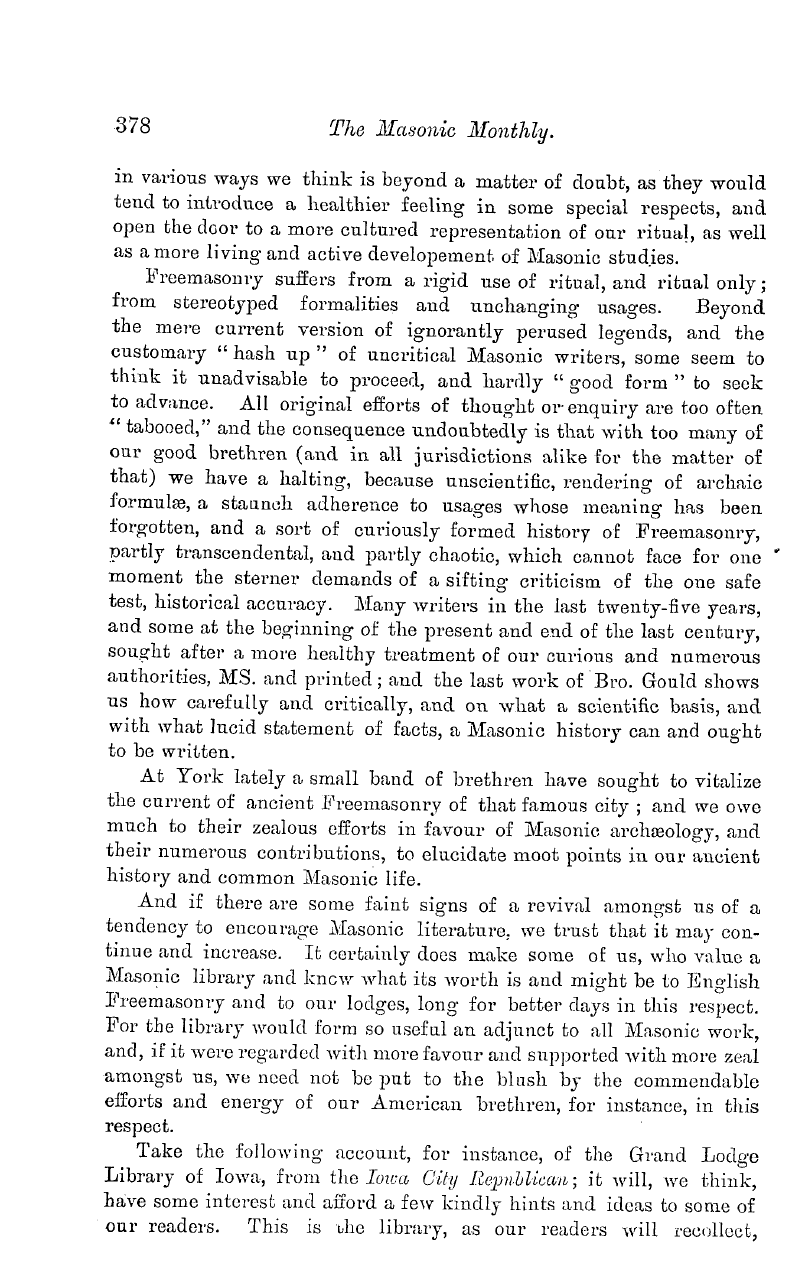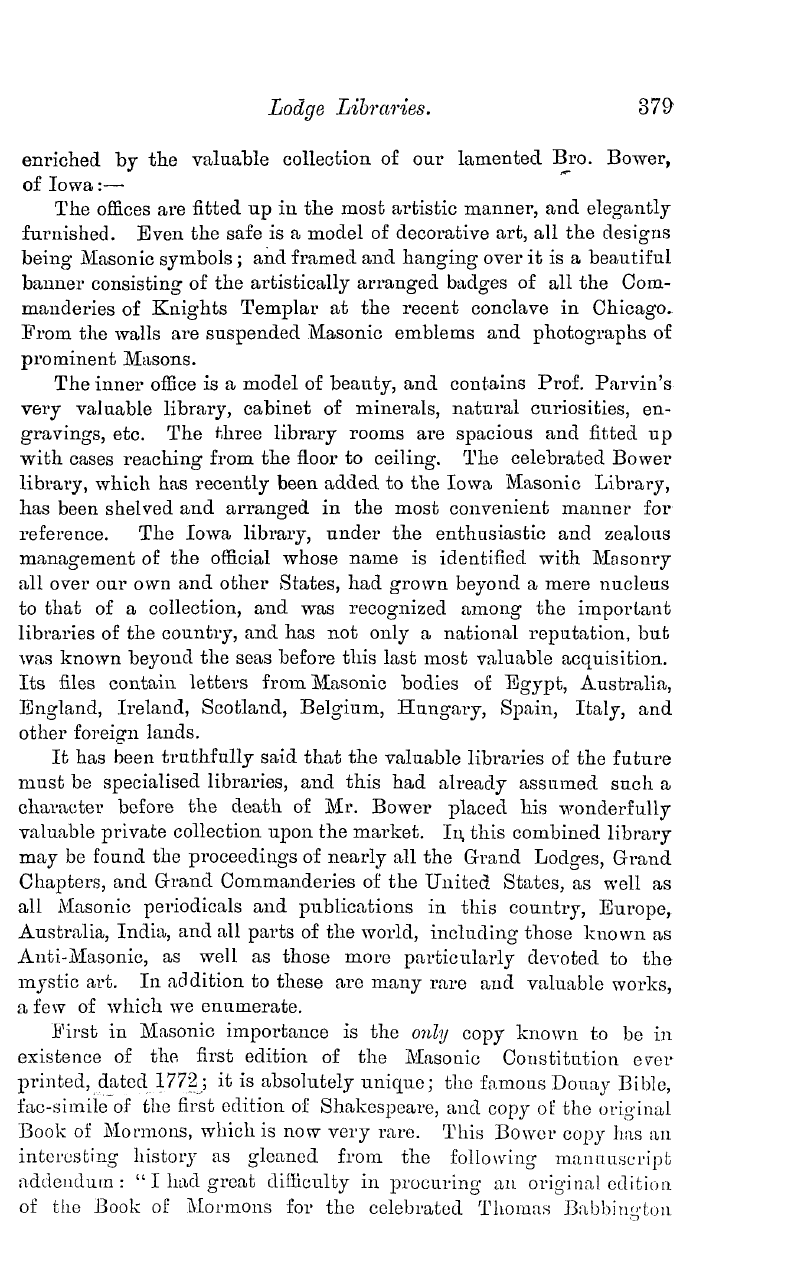-
Articles/Ads
Article THE ROMAN COLLEGIA. ← Page 2 of 4 →
Note: This text has been automatically extracted via Optical Character Recognition (OCR) software.
The Roman Collegia.
In the very learned disquisitions which Hearne and Musgrave and Dodwell have left on this inscription , two facts seem to be assumed ; first , that the Colleges existed in Britain , and secondly , that the Fabricenses were those to whom the care of the public works , & c , was committed .
The second inscription is called the Chichester inscription , and in the " Sussex Archaeological Collection , " vol . vii ., London , 1854 , occurs a long dissertation on it , a tracing of which appeared in the MASONIC MAGAZINE a few years since , as well as the learned dissertation therein en t of Mr . Gale . I think it well to remind my readers of this fact ,
as it has an interest in the present discussion . My own opinion long has been , and in this I entirely concur with Mr . Coote , that the Anglo-Saxon Gild system is derived from the Roman system , the name Gild being a purely Saxon word . As regards the Chichester inscription , Mr . Blaauw observes as
follows : — " The Fabri were incorporated from the earliest times of the Roman Republic , and there is little reason to think that they were
shipbuilders only , as supposed by Gale . " There were , in the municipal towns of the Roman Empire , civil magistrates called Praafecti Fabrum , and also officers with the same title , under whom were the artificers of the army such as Caasar alludes to : ' Jam duo prefect ! Fabrum Pompeii in meam Protestatem
venerunt . '— ' Cass . Oppio , ap Cic' Ep . ix . 8 . 'Reducitur ad eum deprehensus ex Itinere Cn . Magius Cremona prasfectus Fabrum Cn . Pompeii . '— ' Cses . de Bello , ' civ ., 1 . And V . Paterculns ( 2 , 76 ) mentions his own relation as ' prasfectus Fabrum vir nulli secundus . ' " There are Roman inscriptions in which ' Prsef . Fab . ' occur . So
the whole might be freely translated ' The Gild of Artificers and their Prefects , out of their own means have dedicated the Temple to Neptune and Minerva , for the welfare of the Imperial family , with the sanction of the Emperor Claudius and of King Cogidubuns , the Emperor ' s Lieutenant in Britain , the site being the gift of Pudens , son of Pudentinus . ' "
-Nepttmi et Miuervee Templnm Pro salute Domiis Divinae Ex autoritafe Tib Claud Cogidubni B . Legat Aug in Brit Coll- 'giirm Fabror et qui in eo
A sacris D . S . D . don ante aream Ptidente Pndentini Fil , The letters italicised are supplied from imagination . "The stone was discovered in April , 1723 , while digging the "foundations of the Council Chamber in North Street , Chichester . A Y 2
Note: This text has been automatically extracted via Optical Character Recognition (OCR) software.
The Roman Collegia.
In the very learned disquisitions which Hearne and Musgrave and Dodwell have left on this inscription , two facts seem to be assumed ; first , that the Colleges existed in Britain , and secondly , that the Fabricenses were those to whom the care of the public works , & c , was committed .
The second inscription is called the Chichester inscription , and in the " Sussex Archaeological Collection , " vol . vii ., London , 1854 , occurs a long dissertation on it , a tracing of which appeared in the MASONIC MAGAZINE a few years since , as well as the learned dissertation therein en t of Mr . Gale . I think it well to remind my readers of this fact ,
as it has an interest in the present discussion . My own opinion long has been , and in this I entirely concur with Mr . Coote , that the Anglo-Saxon Gild system is derived from the Roman system , the name Gild being a purely Saxon word . As regards the Chichester inscription , Mr . Blaauw observes as
follows : — " The Fabri were incorporated from the earliest times of the Roman Republic , and there is little reason to think that they were
shipbuilders only , as supposed by Gale . " There were , in the municipal towns of the Roman Empire , civil magistrates called Praafecti Fabrum , and also officers with the same title , under whom were the artificers of the army such as Caasar alludes to : ' Jam duo prefect ! Fabrum Pompeii in meam Protestatem
venerunt . '— ' Cass . Oppio , ap Cic' Ep . ix . 8 . 'Reducitur ad eum deprehensus ex Itinere Cn . Magius Cremona prasfectus Fabrum Cn . Pompeii . '— ' Cses . de Bello , ' civ ., 1 . And V . Paterculns ( 2 , 76 ) mentions his own relation as ' prasfectus Fabrum vir nulli secundus . ' " There are Roman inscriptions in which ' Prsef . Fab . ' occur . So
the whole might be freely translated ' The Gild of Artificers and their Prefects , out of their own means have dedicated the Temple to Neptune and Minerva , for the welfare of the Imperial family , with the sanction of the Emperor Claudius and of King Cogidubuns , the Emperor ' s Lieutenant in Britain , the site being the gift of Pudens , son of Pudentinus . ' "
-Nepttmi et Miuervee Templnm Pro salute Domiis Divinae Ex autoritafe Tib Claud Cogidubni B . Legat Aug in Brit Coll- 'giirm Fabror et qui in eo
A sacris D . S . D . don ante aream Ptidente Pndentini Fil , The letters italicised are supplied from imagination . "The stone was discovered in April , 1723 , while digging the "foundations of the Council Chamber in North Street , Chichester . A Y 2




















